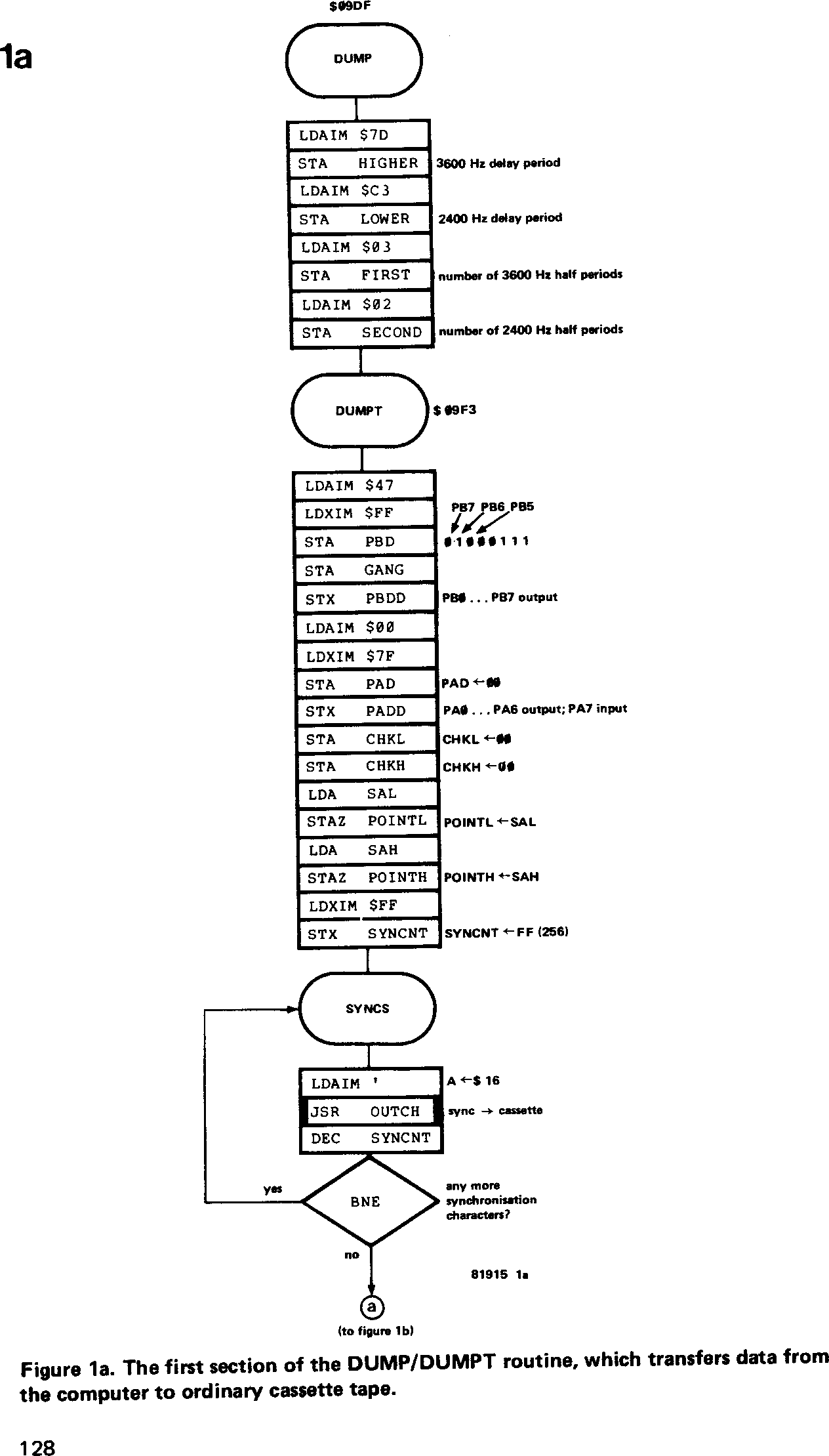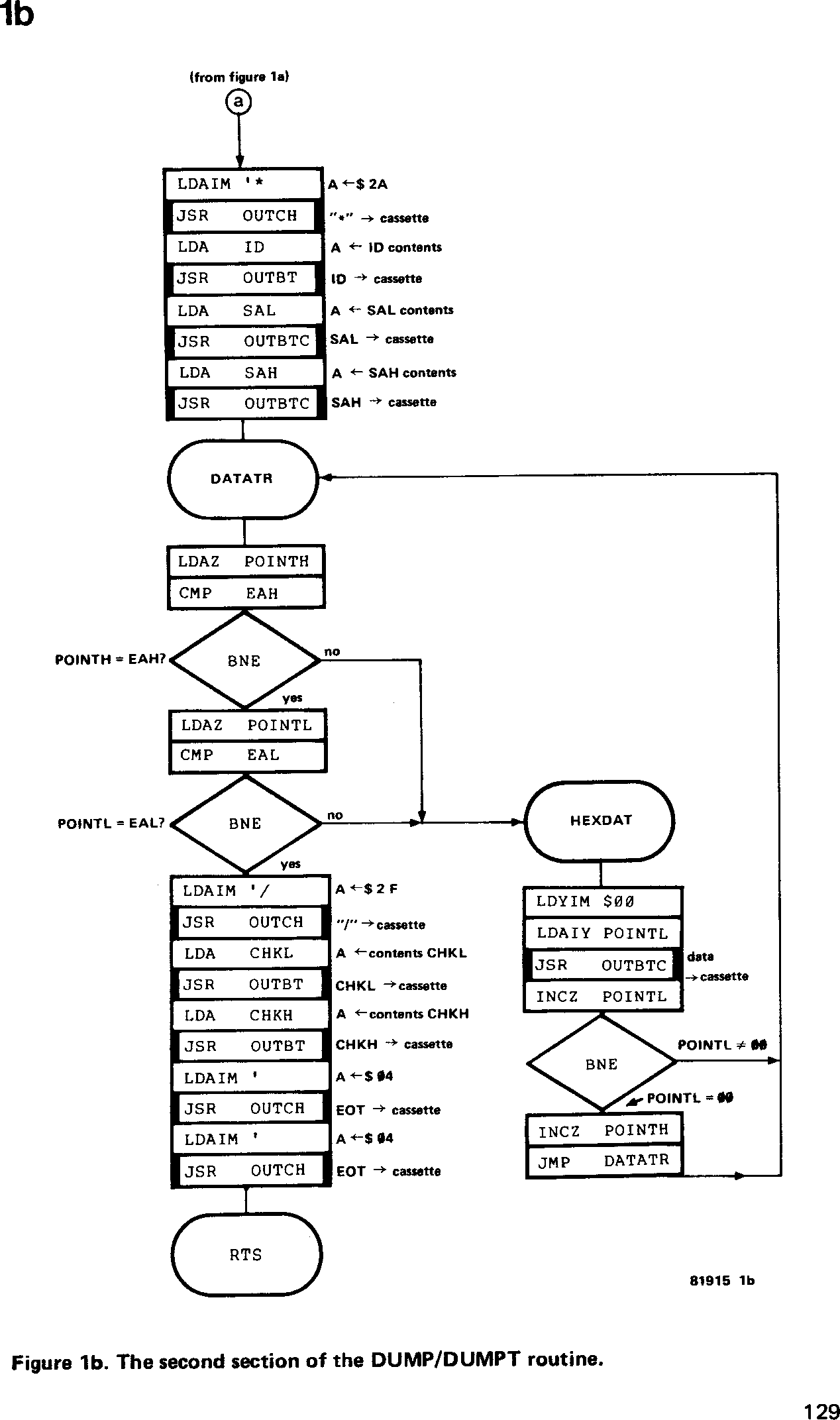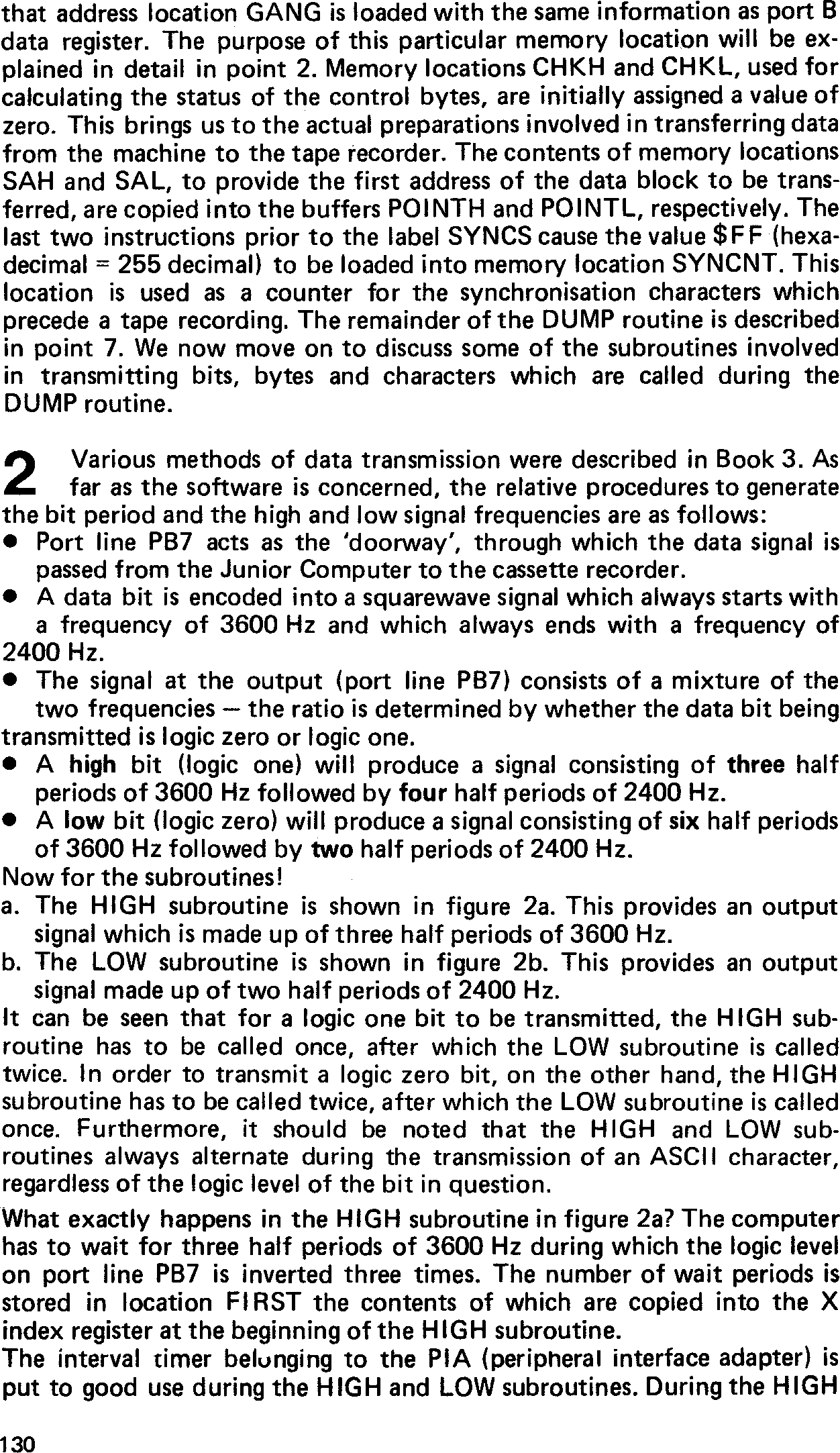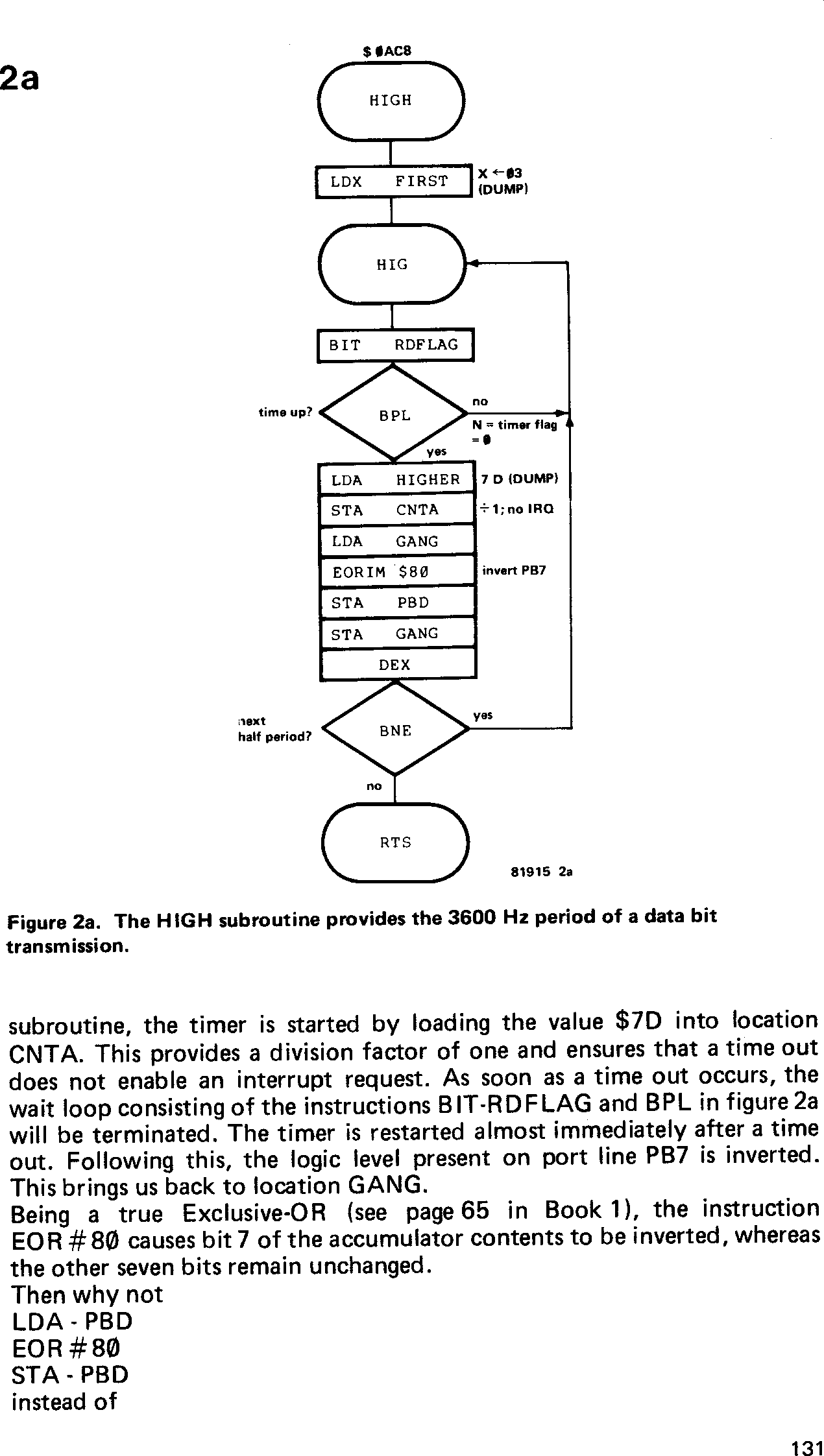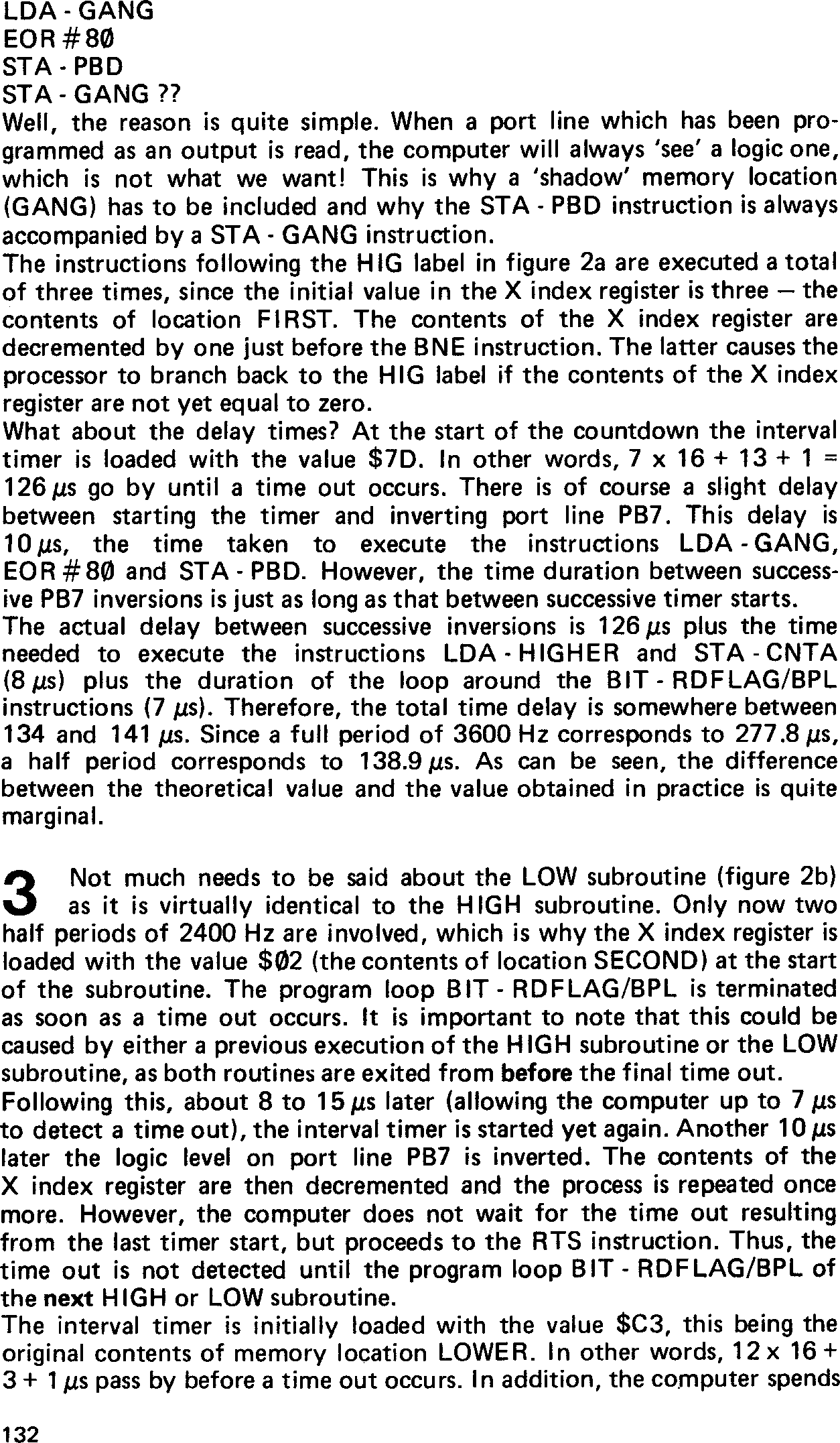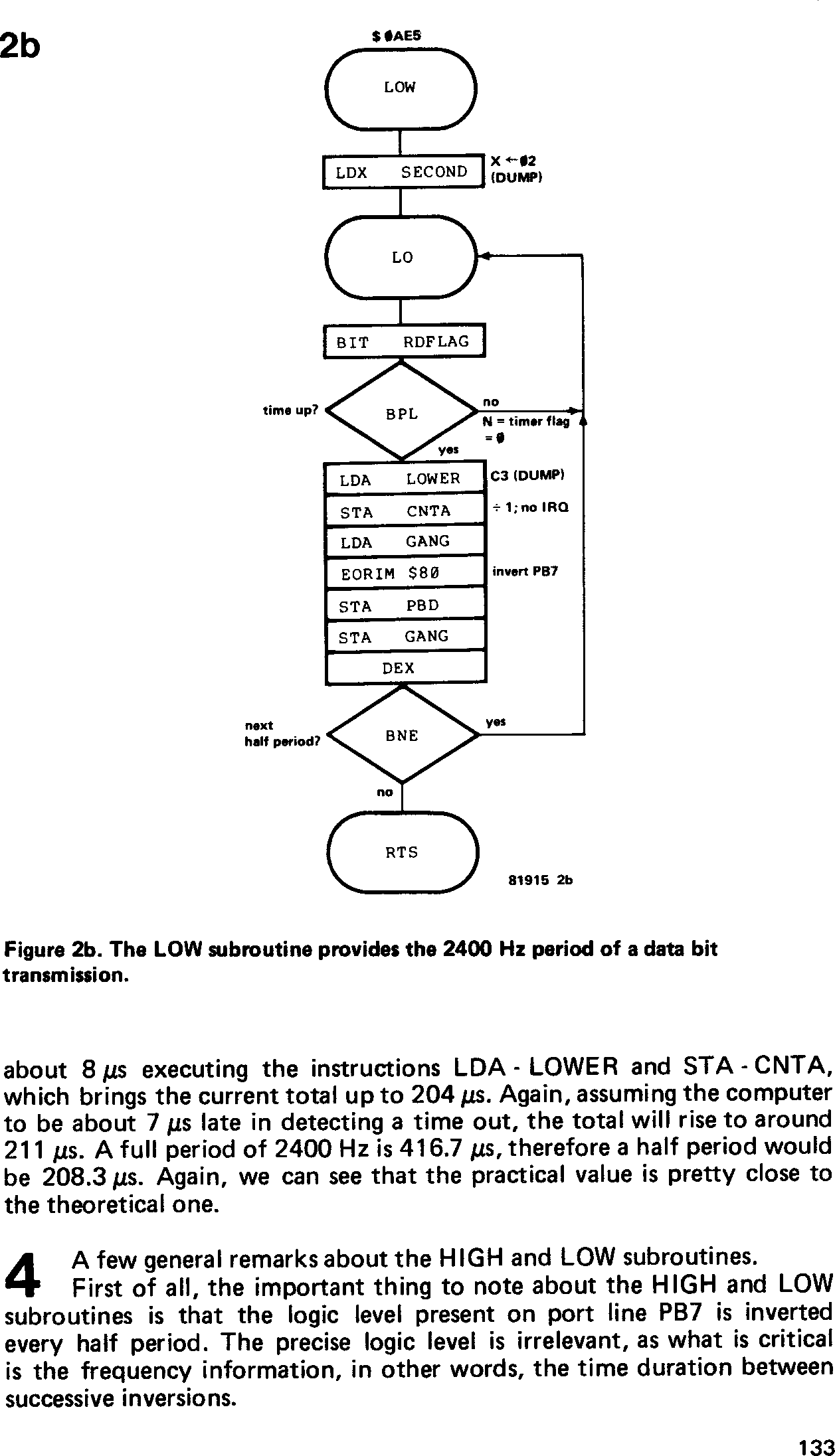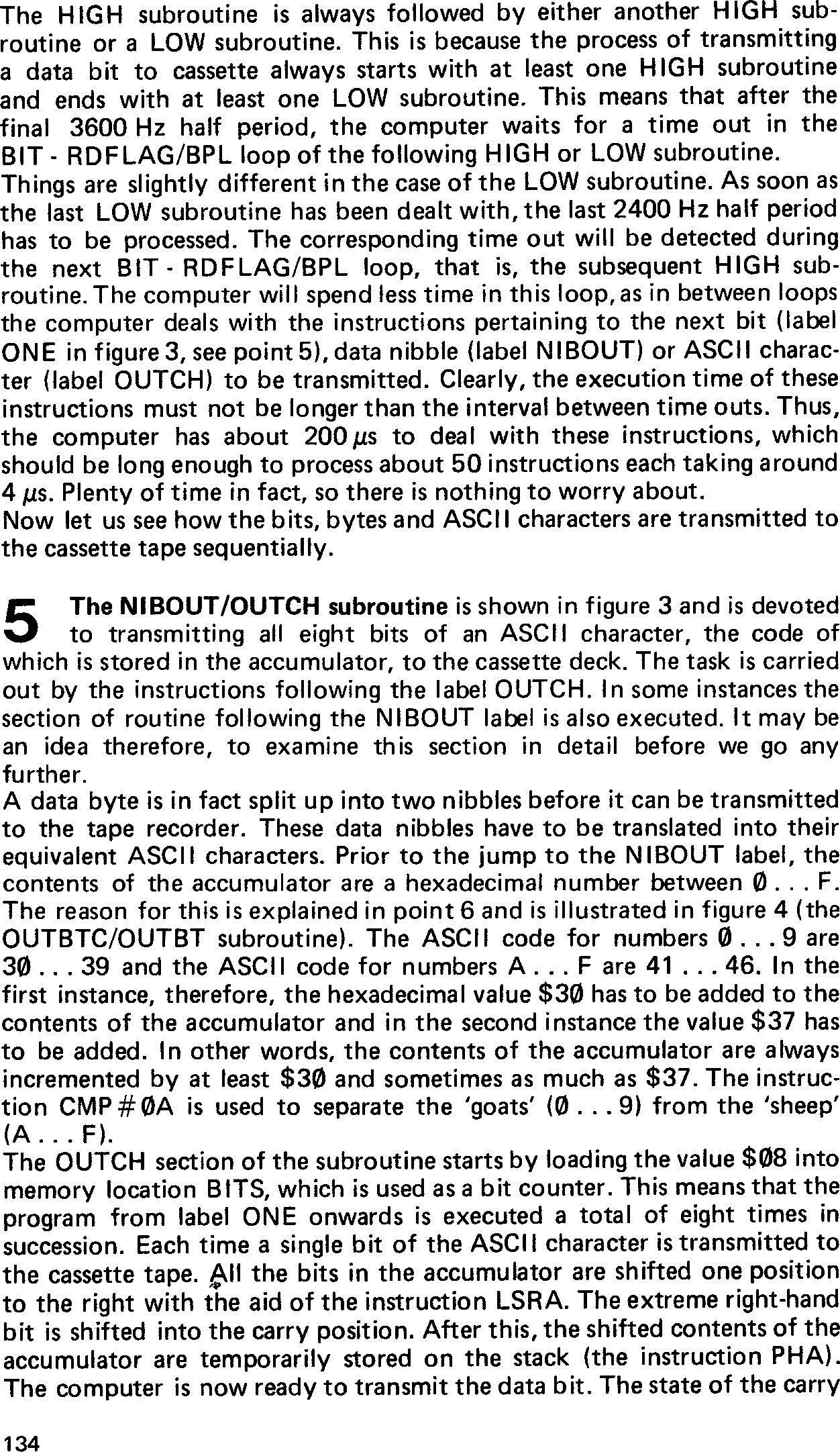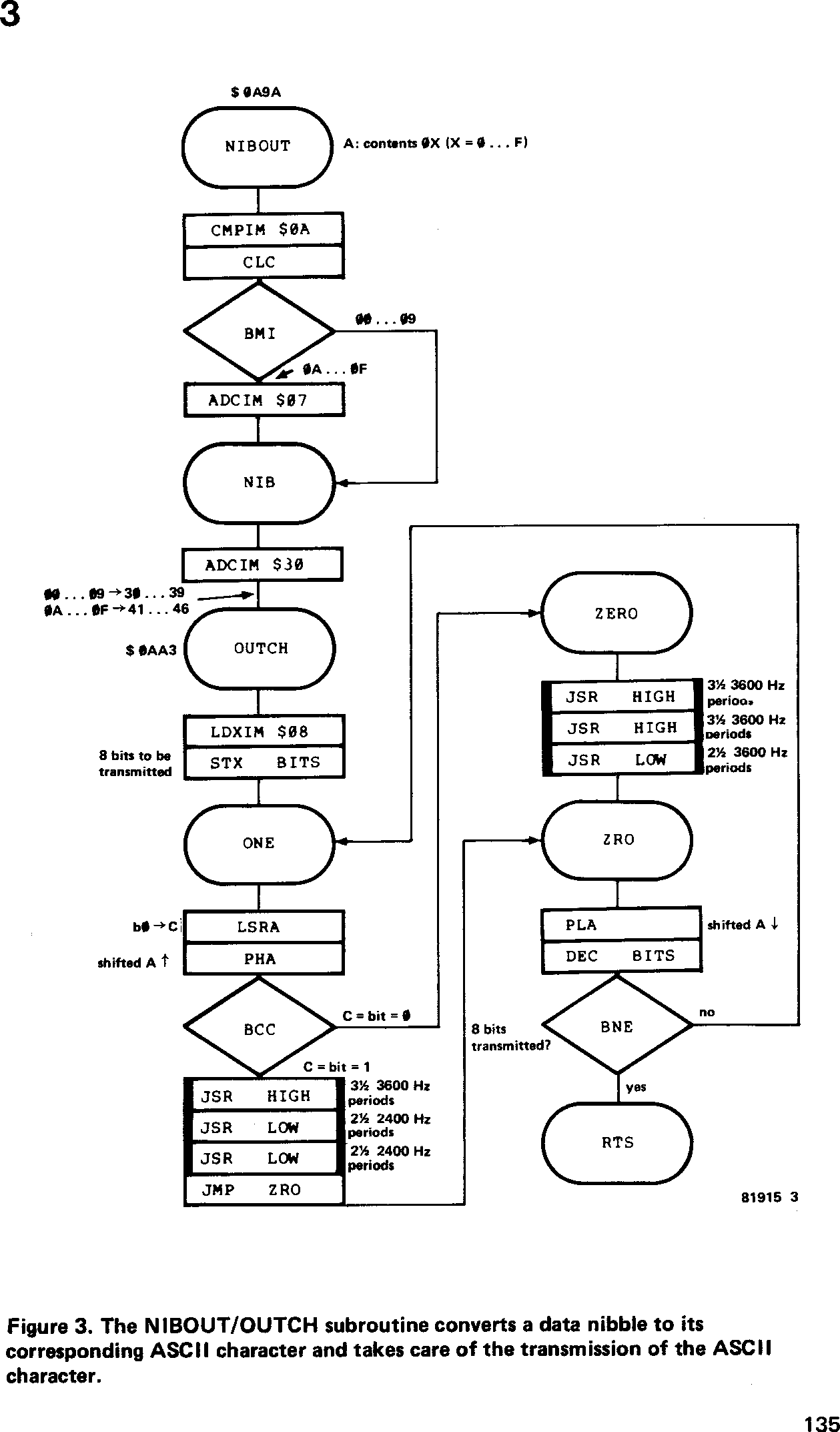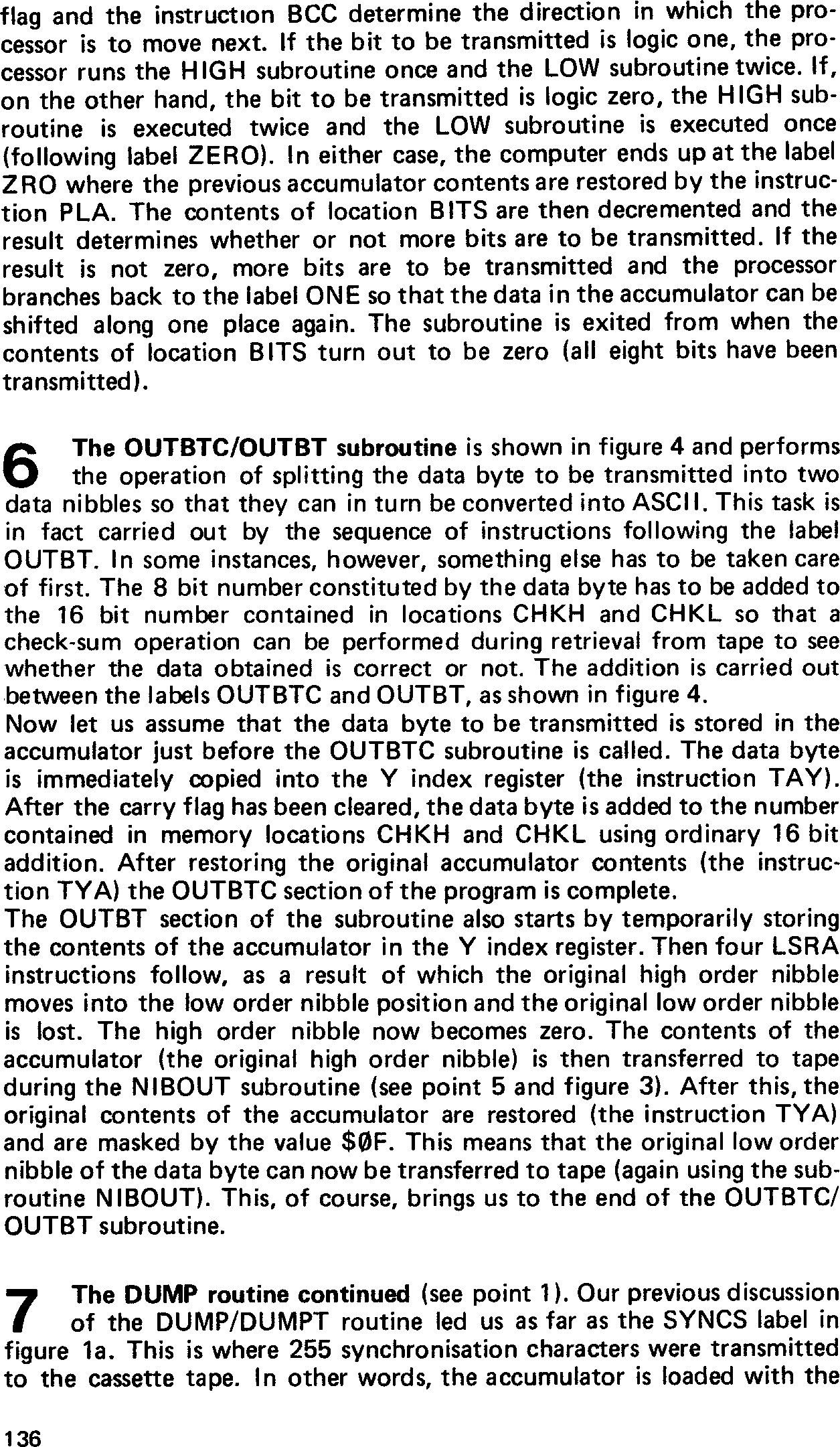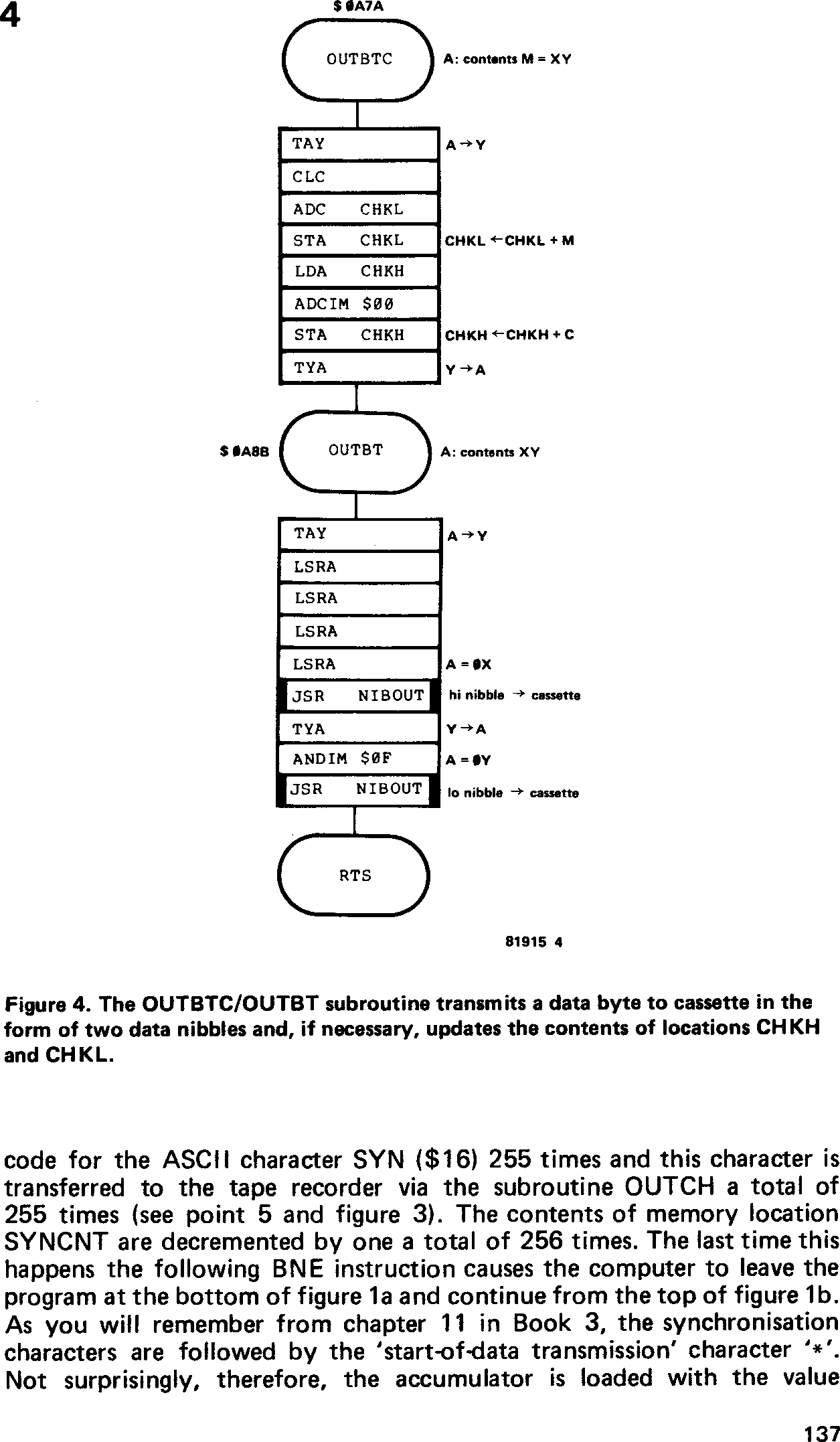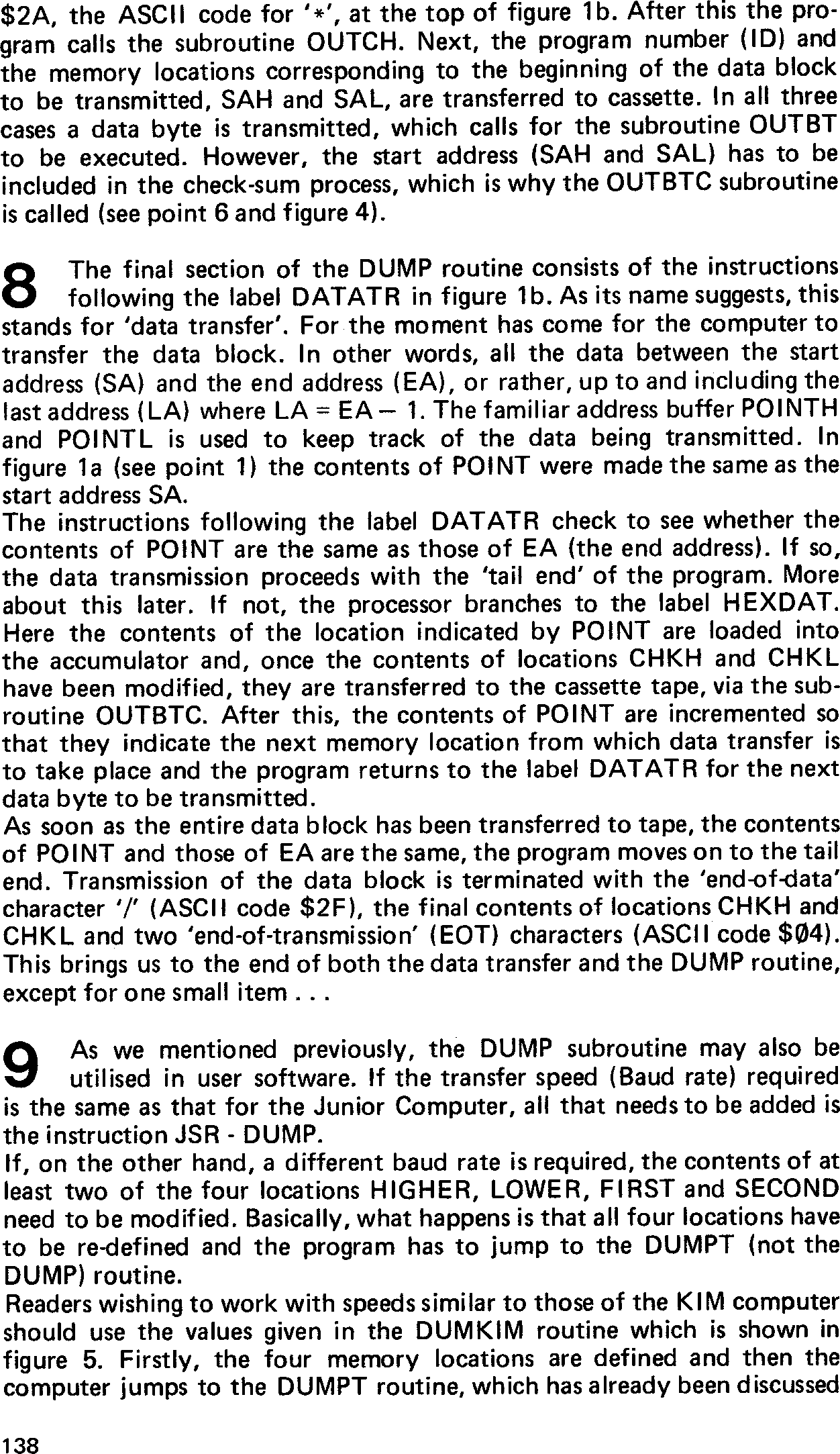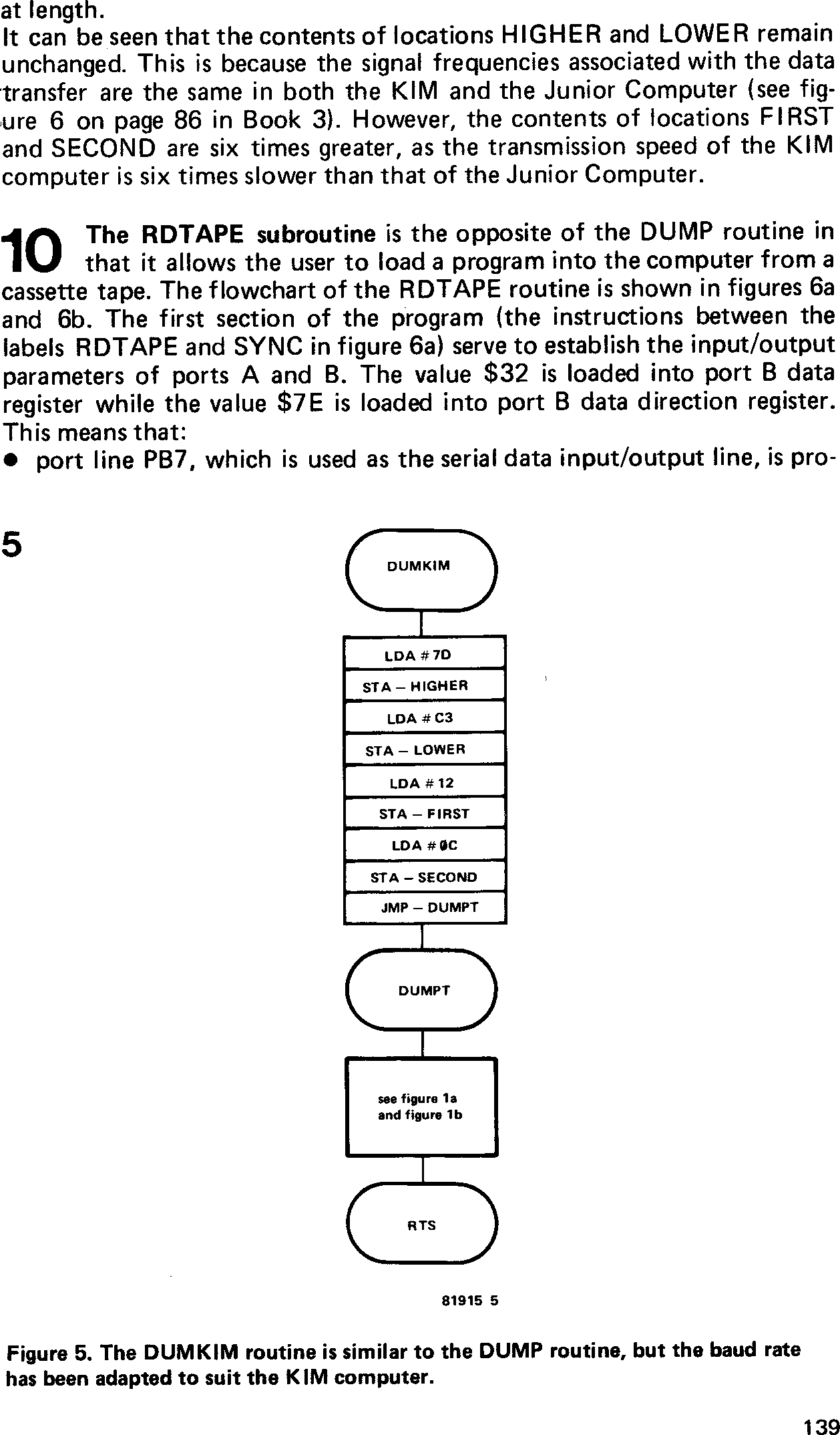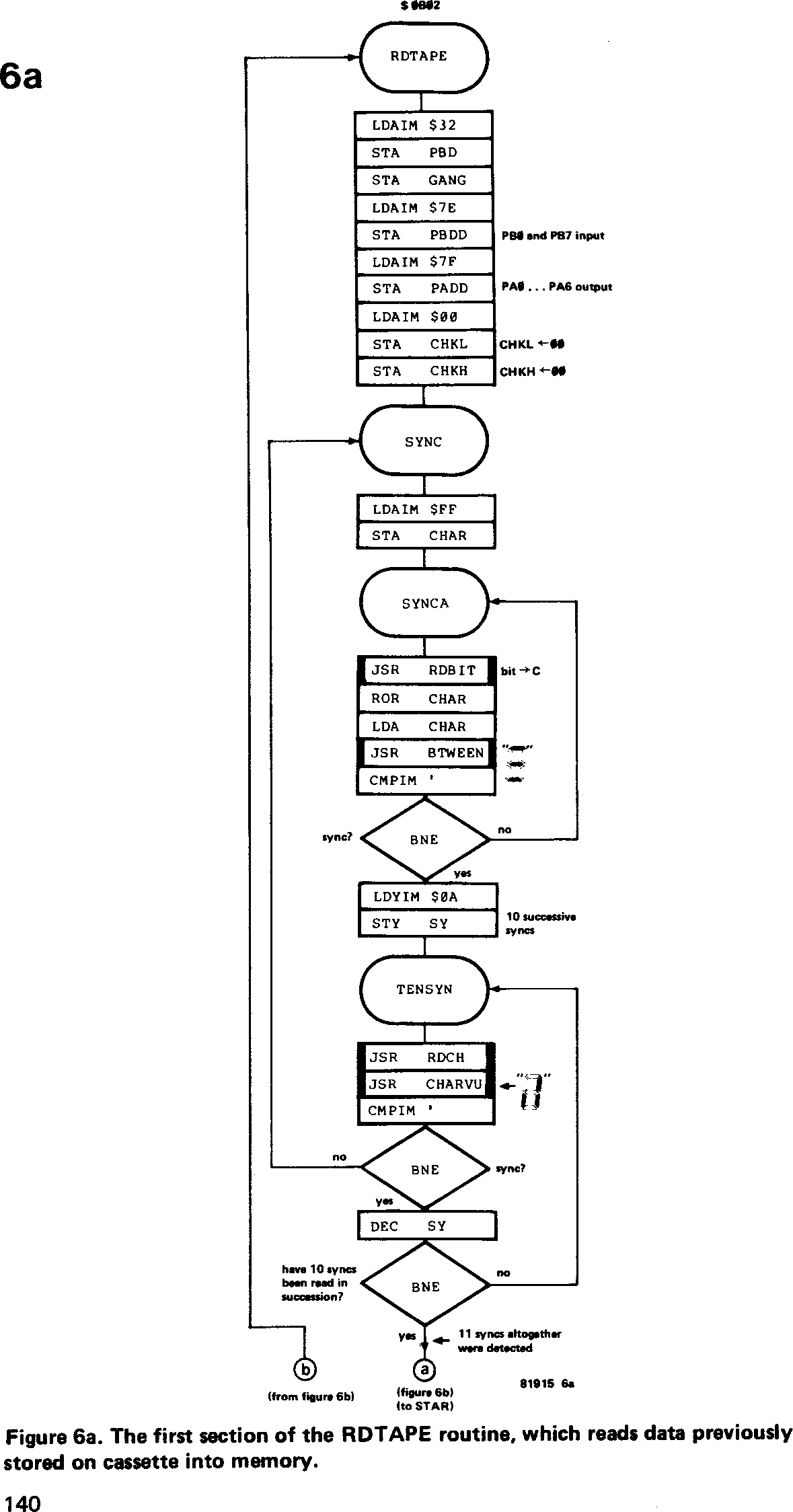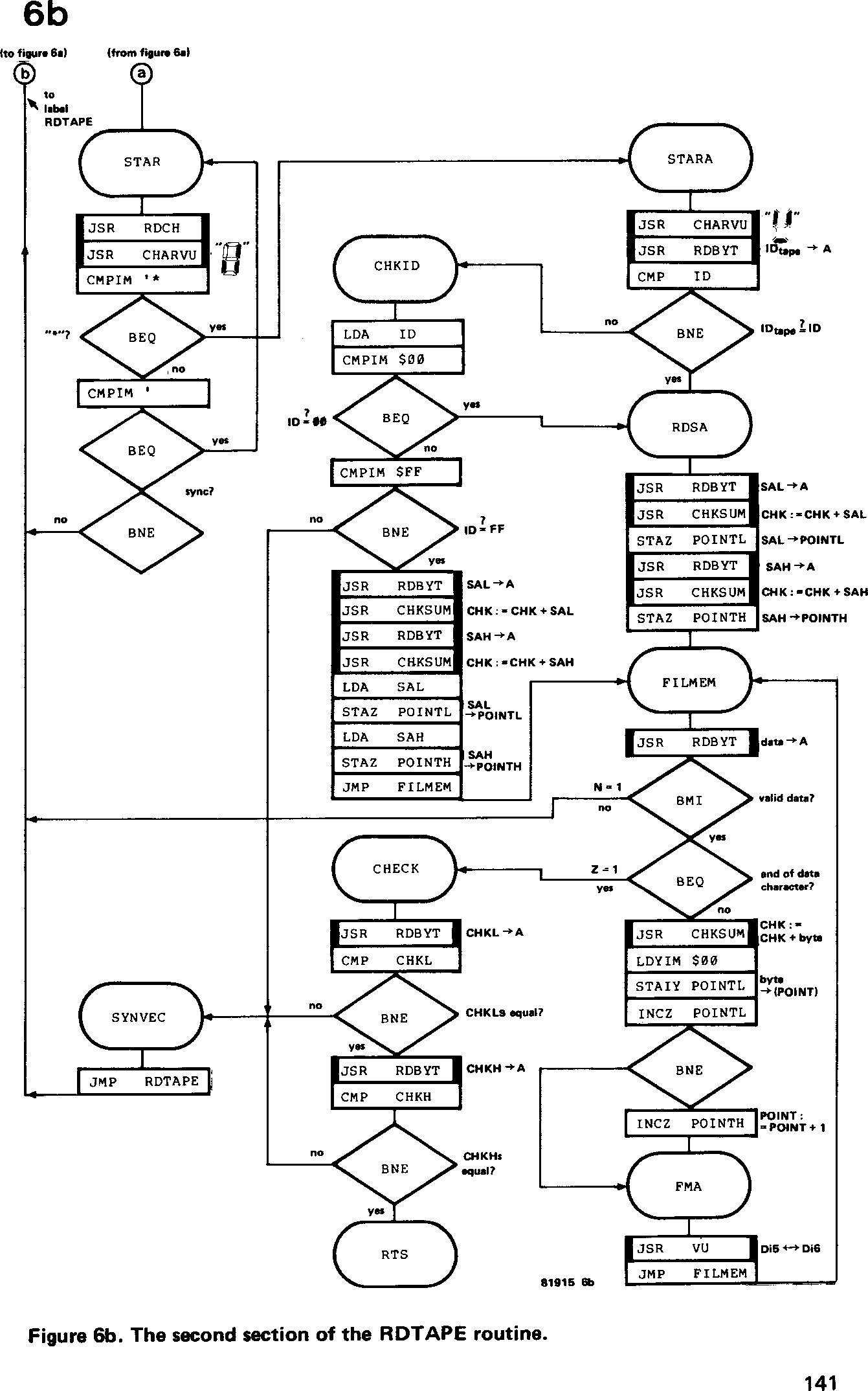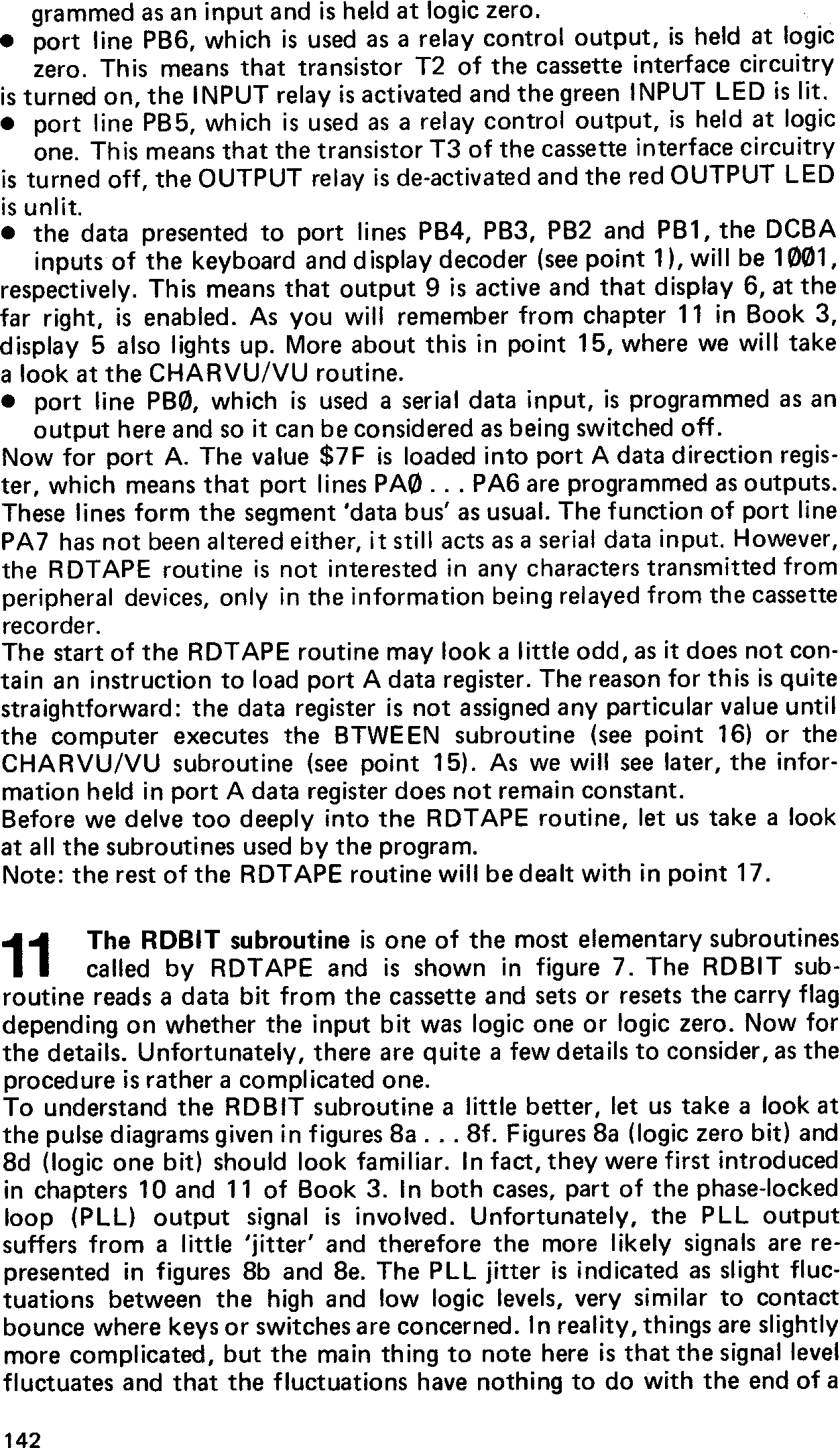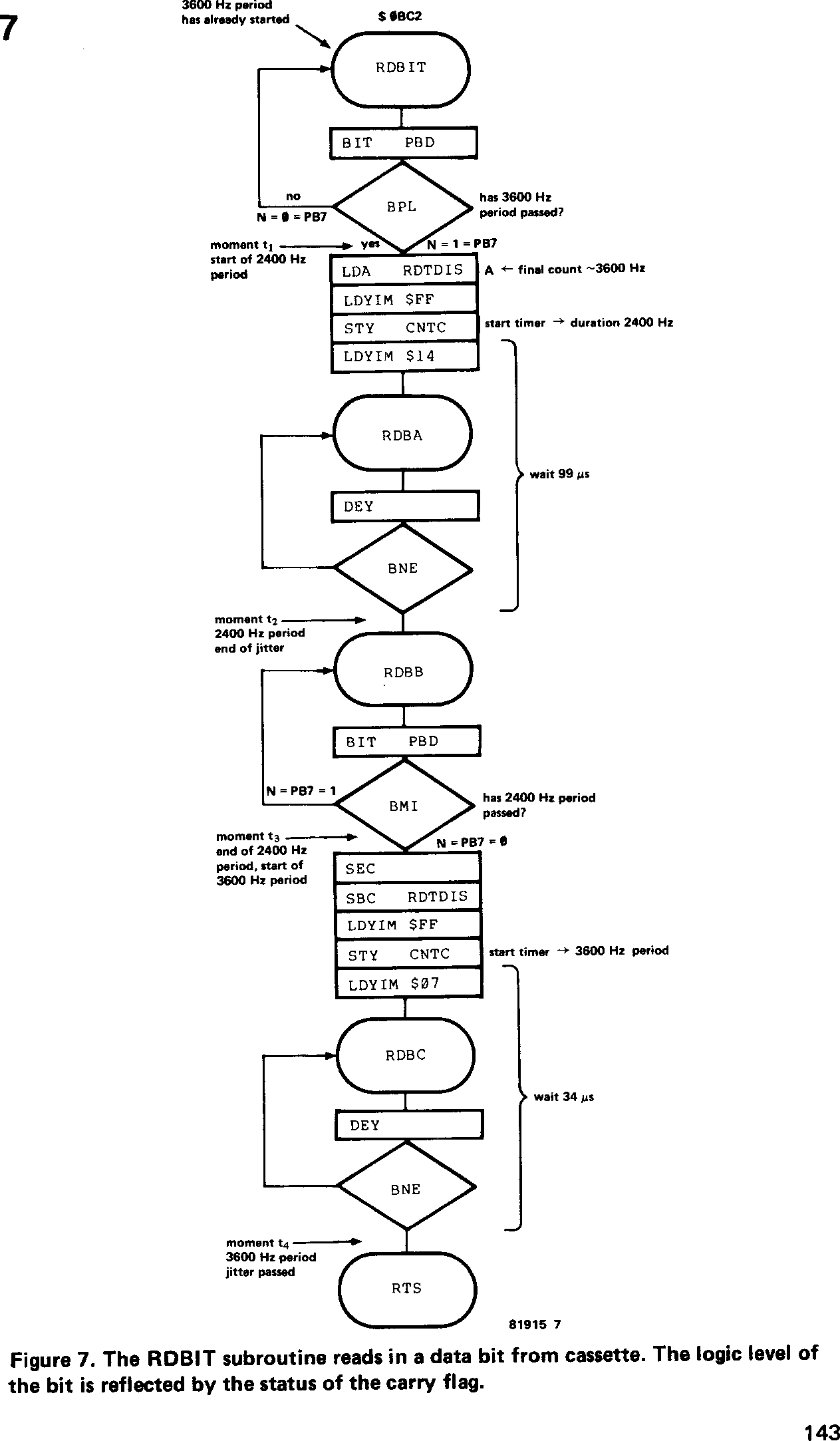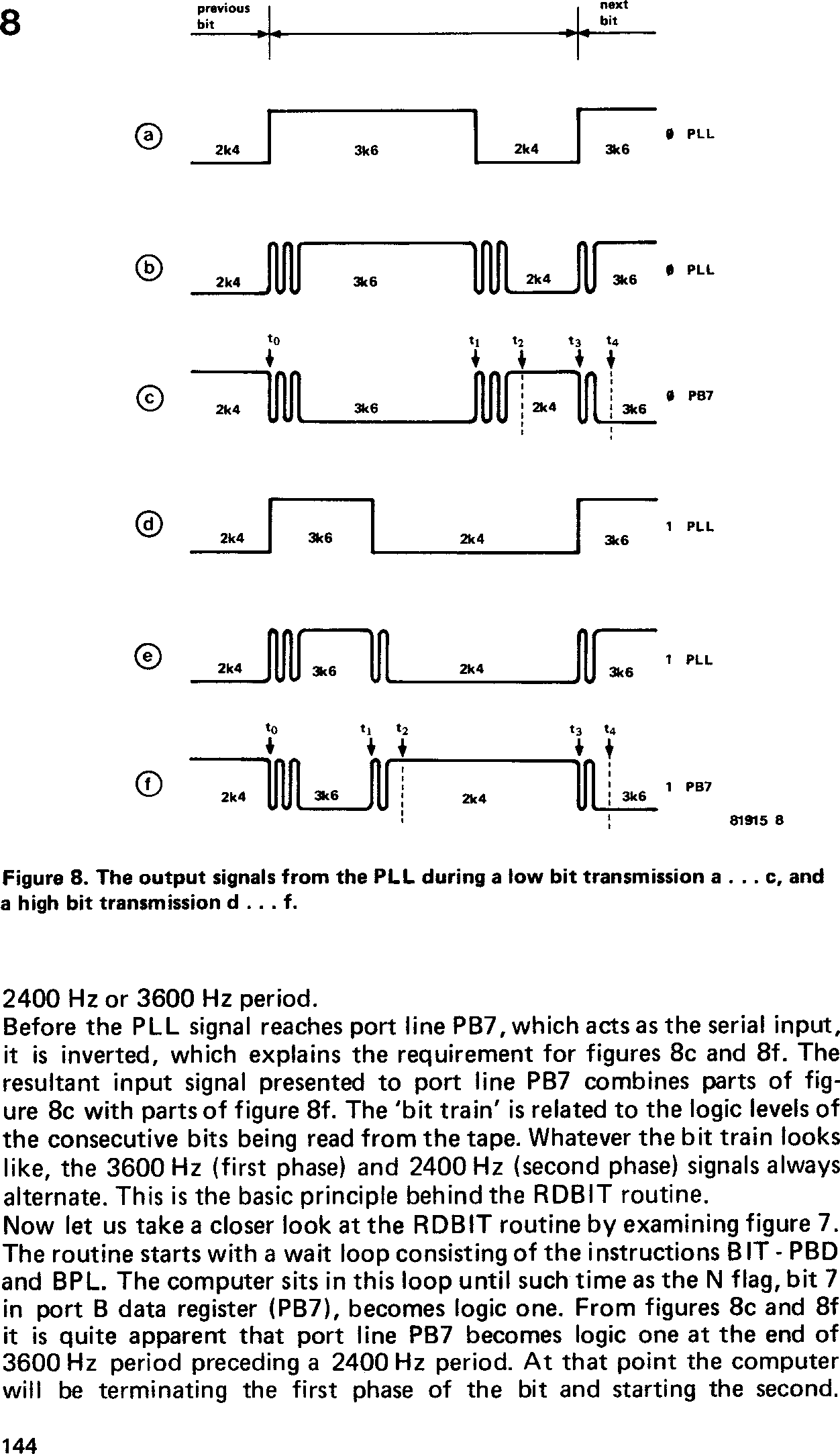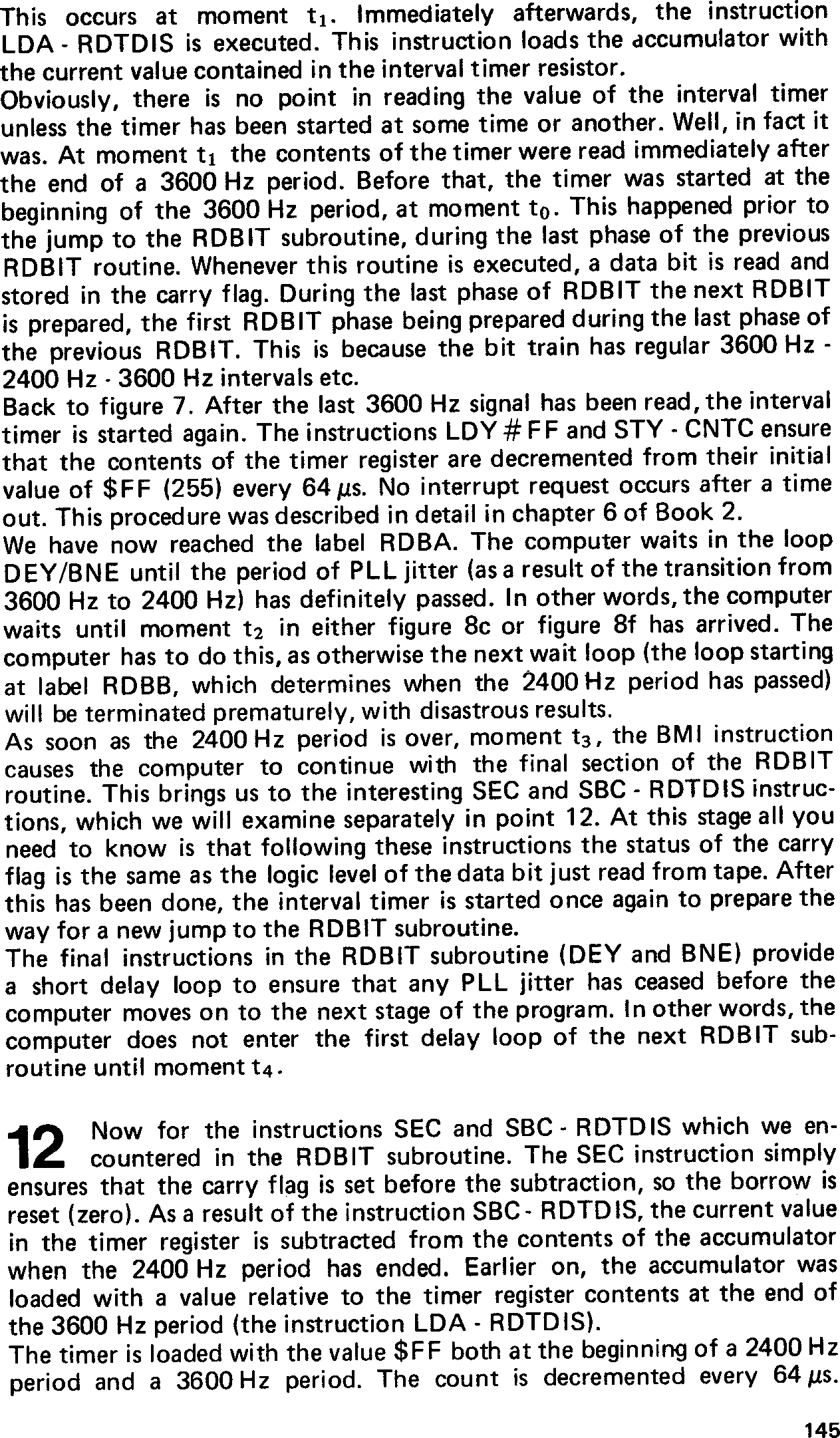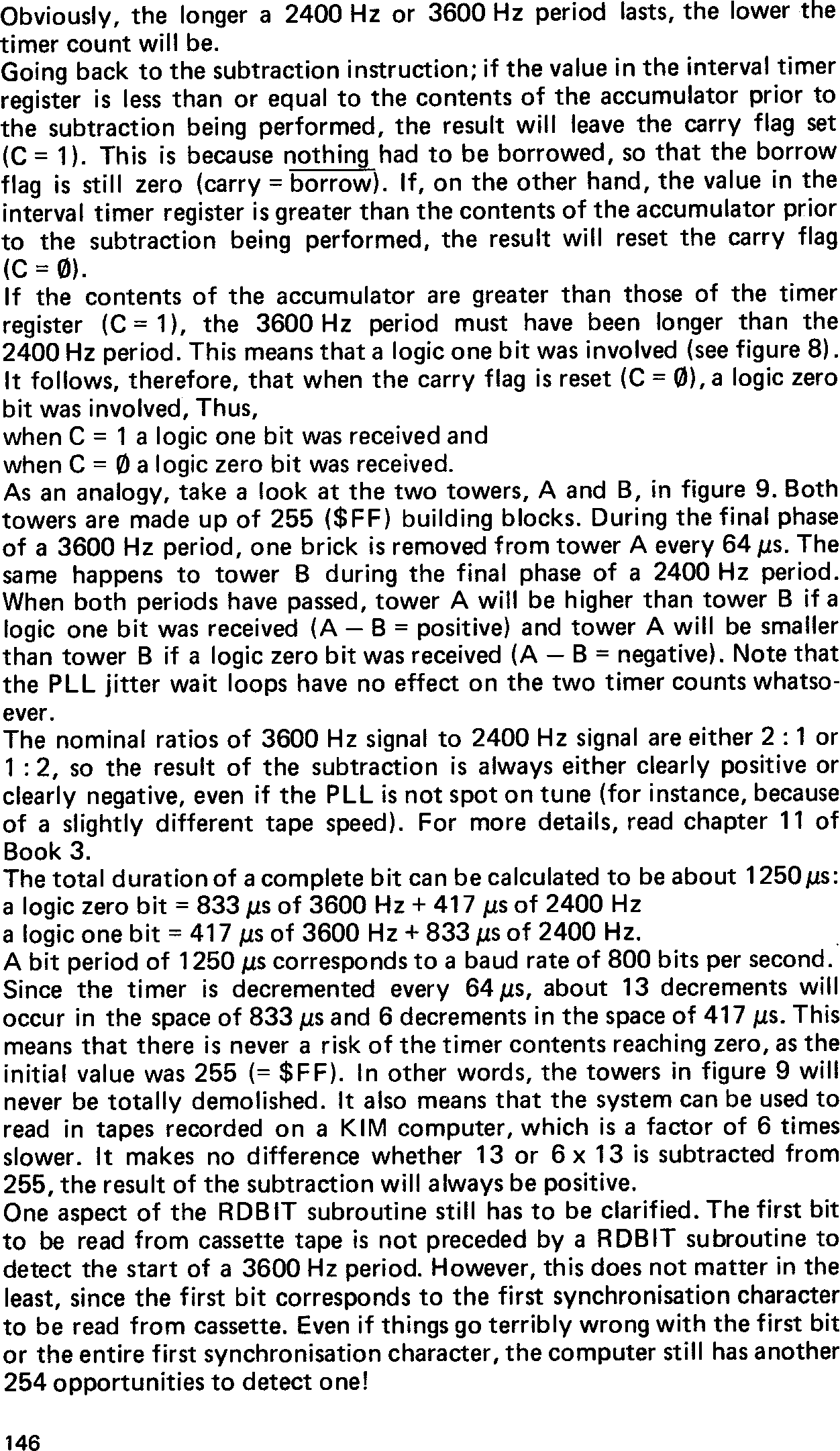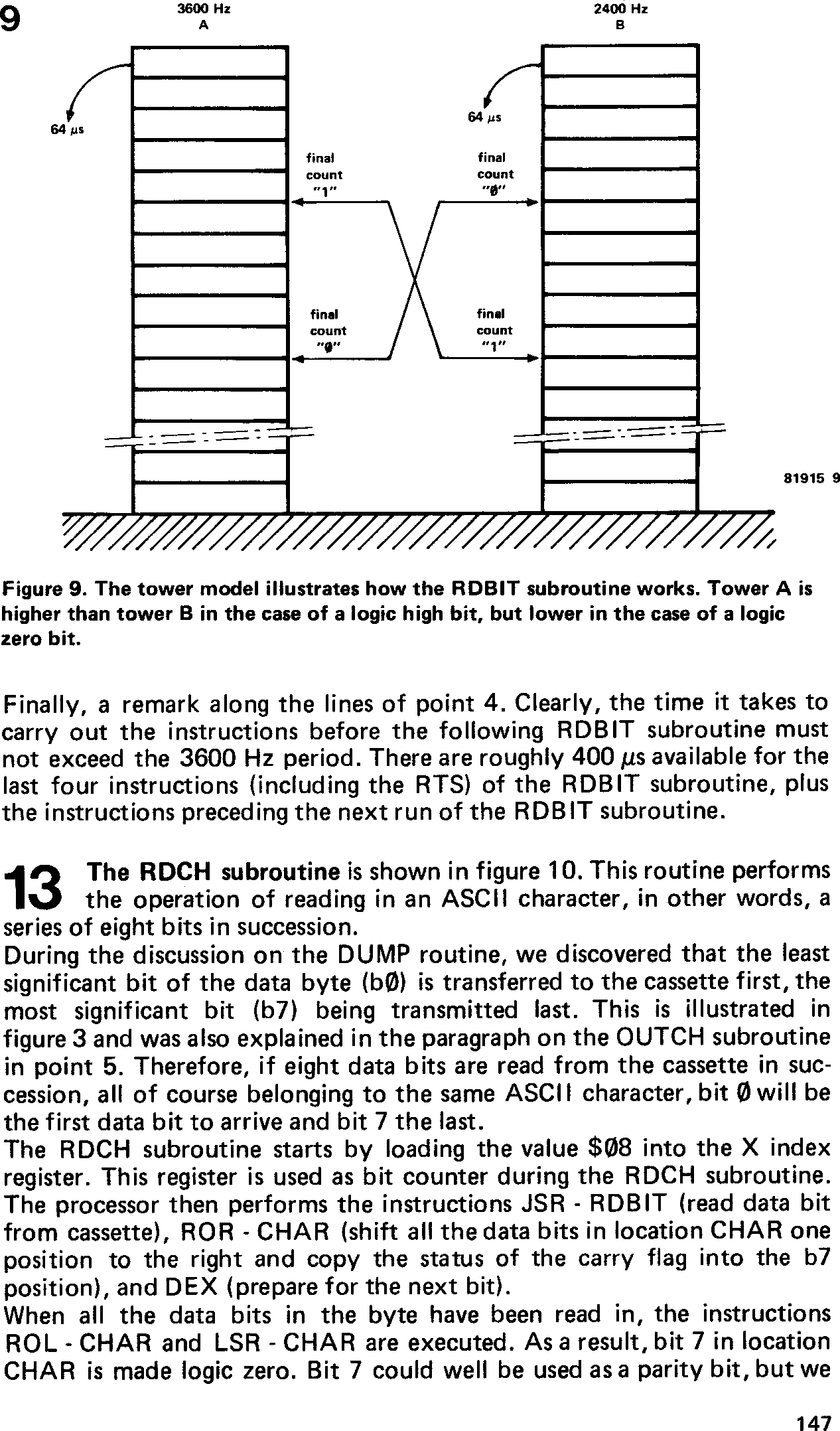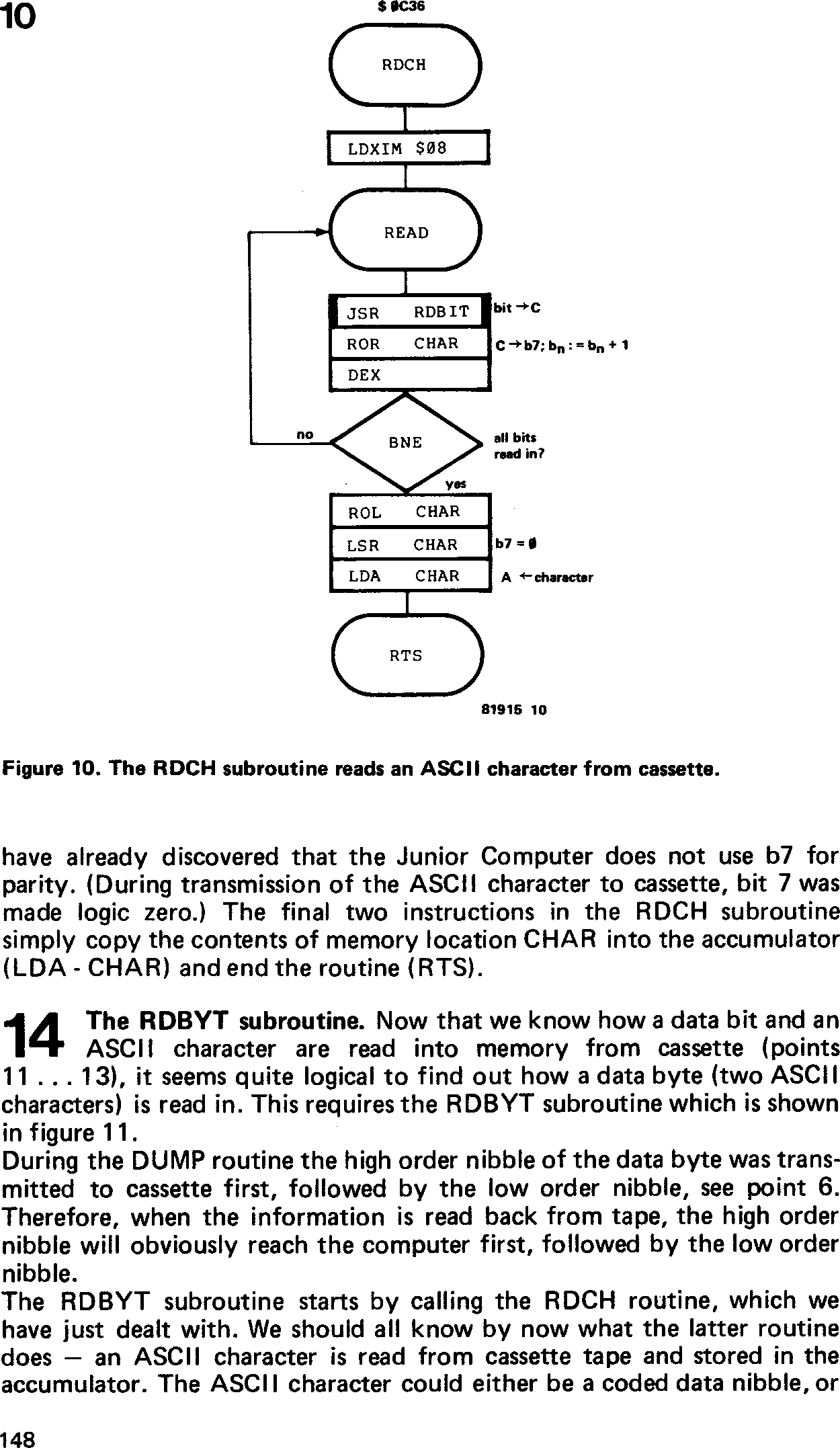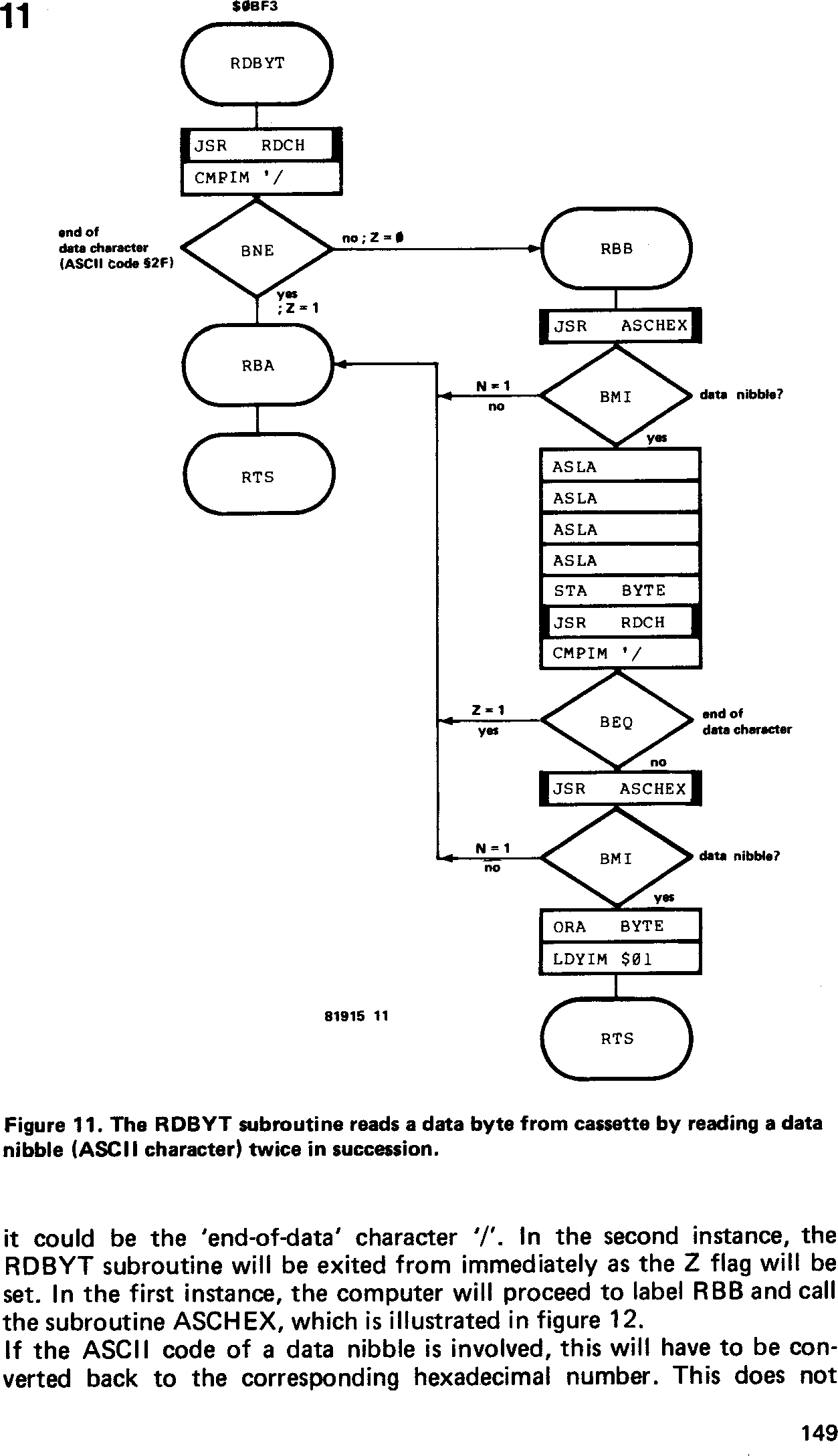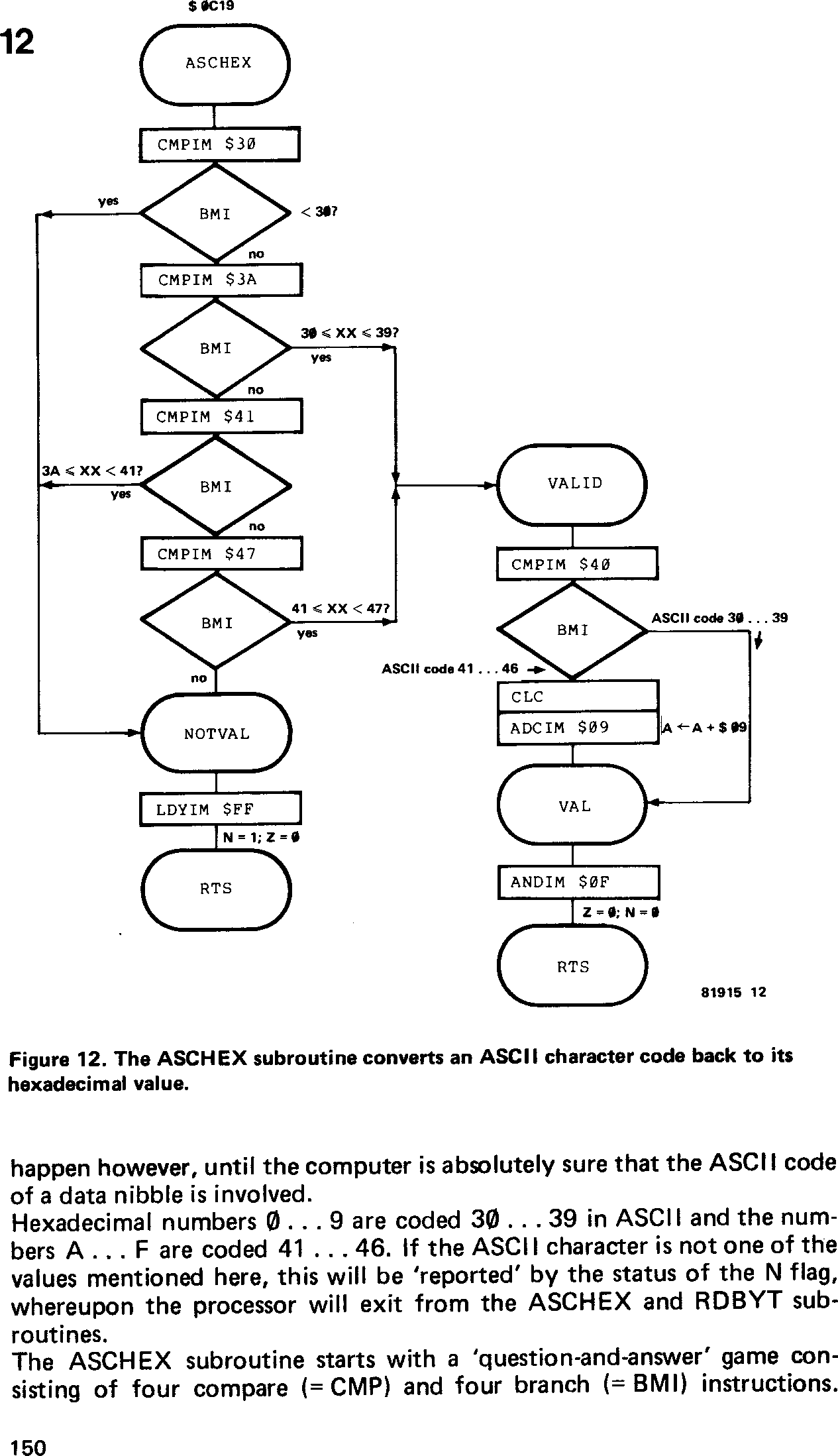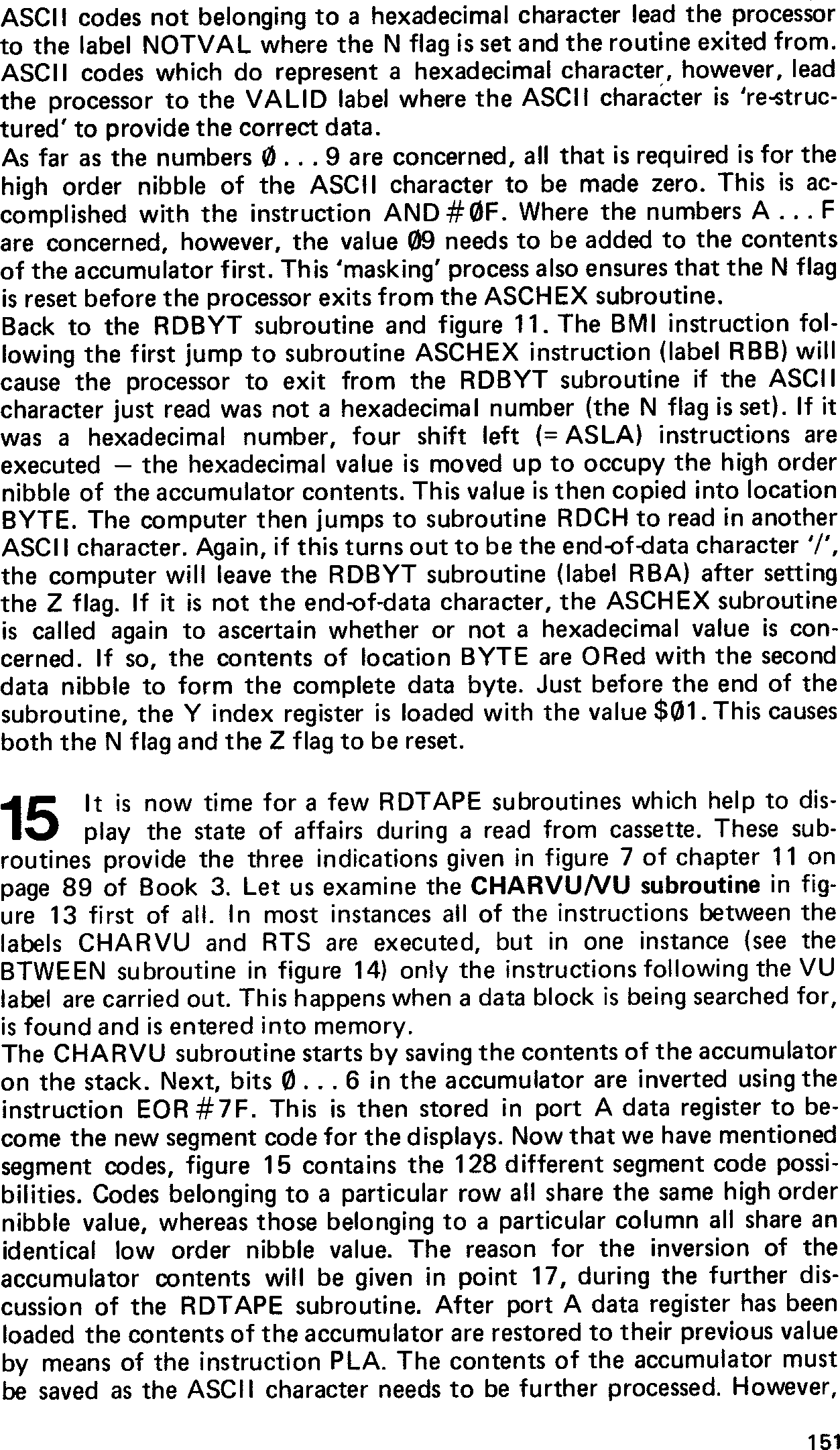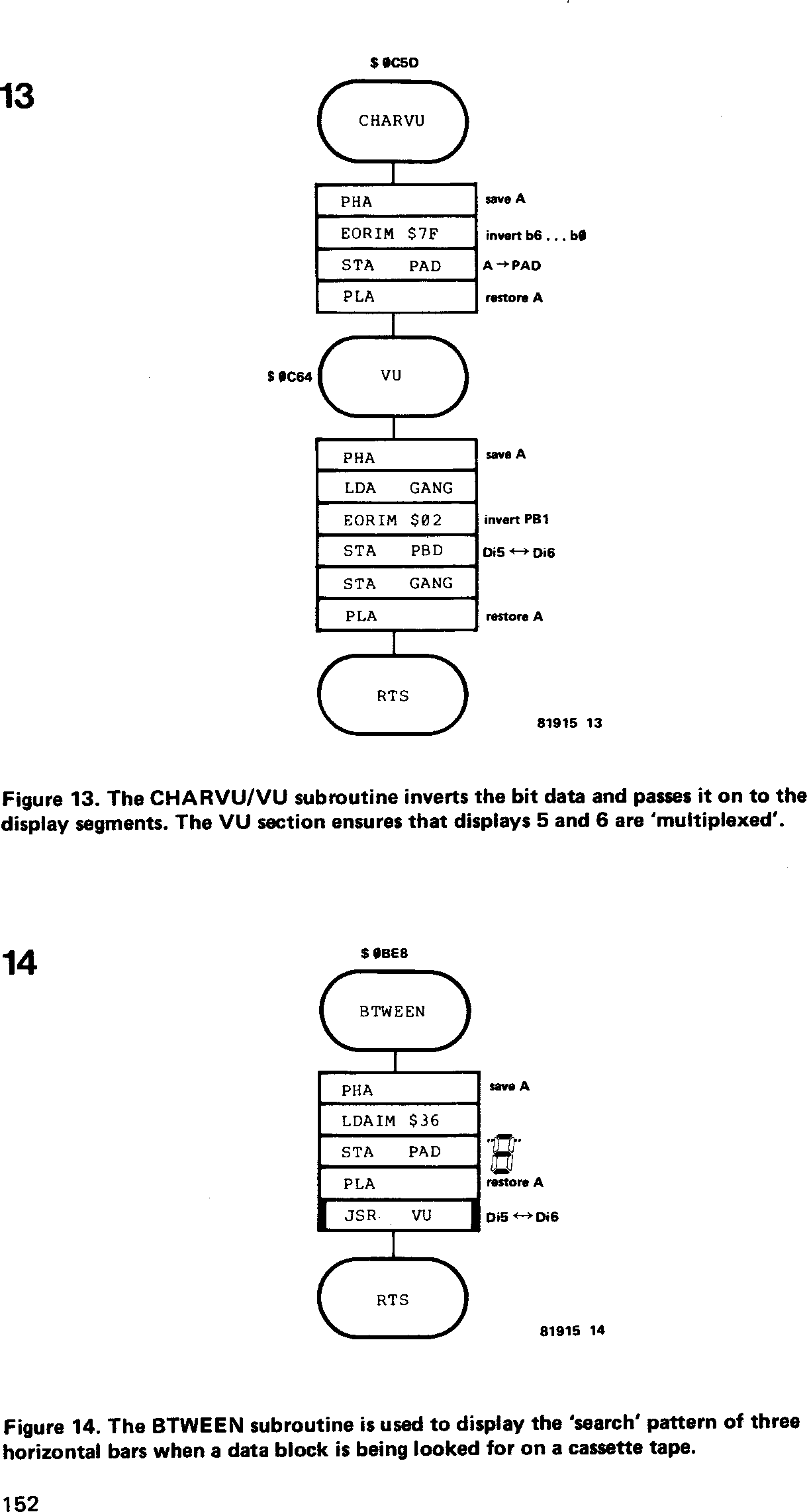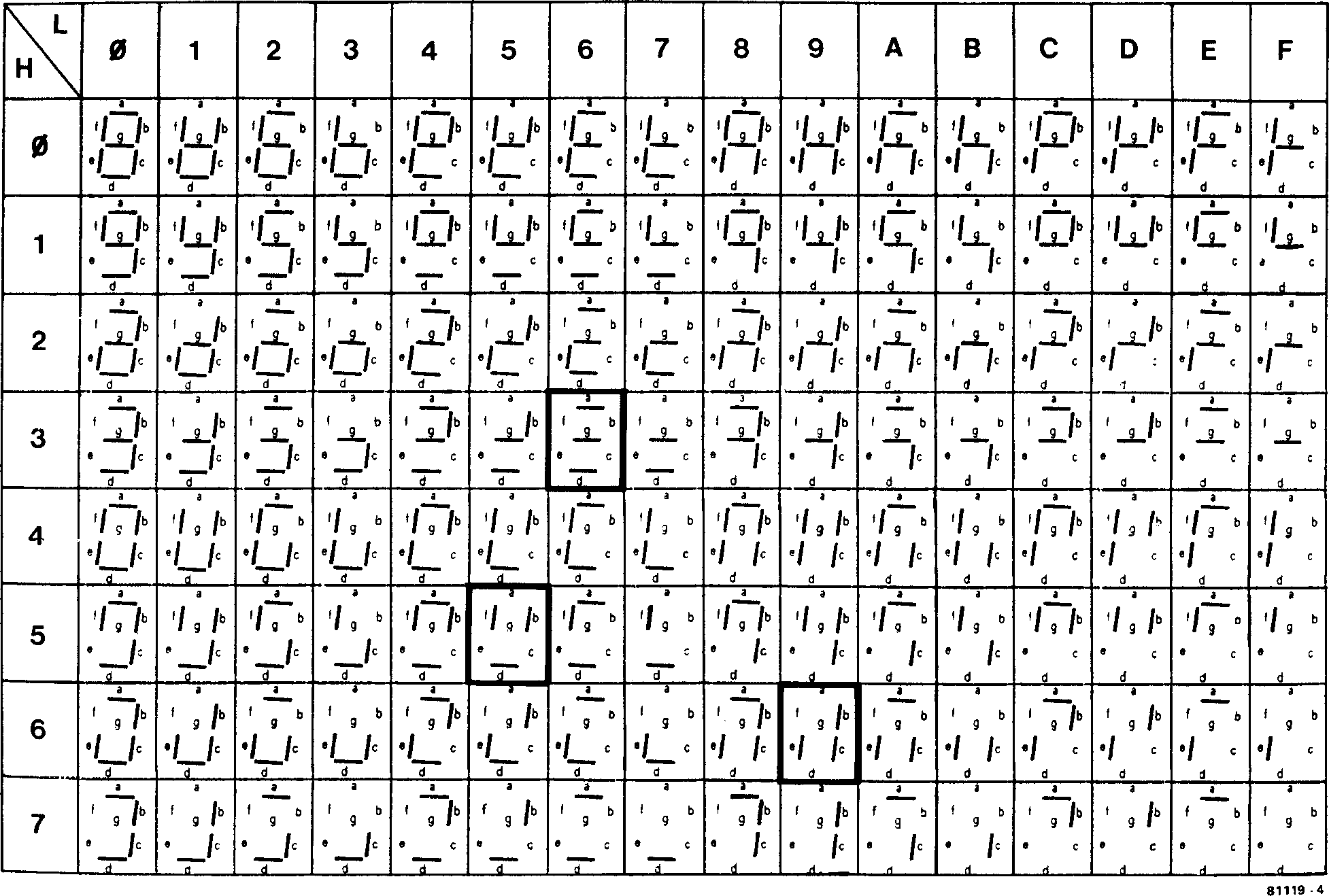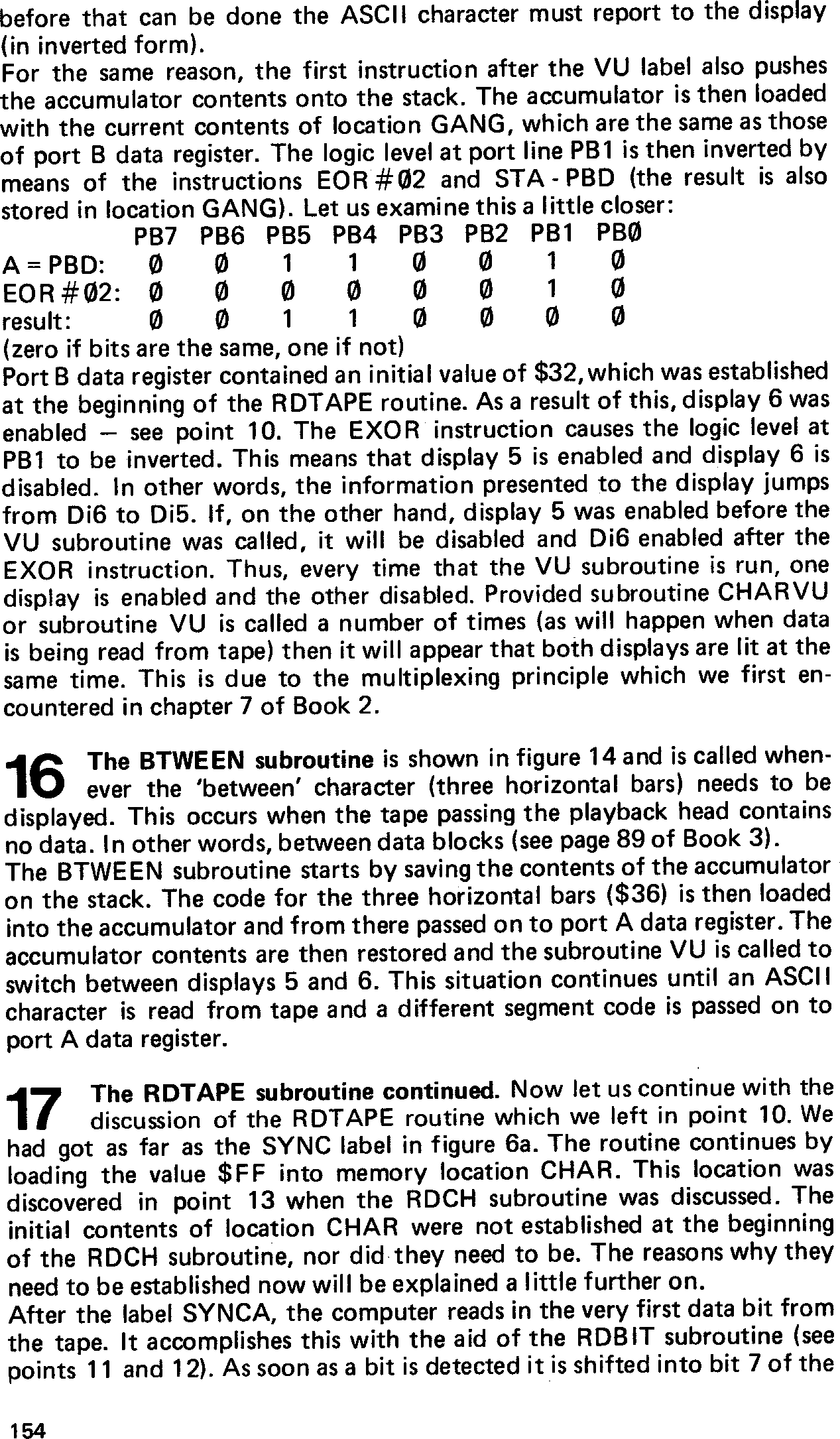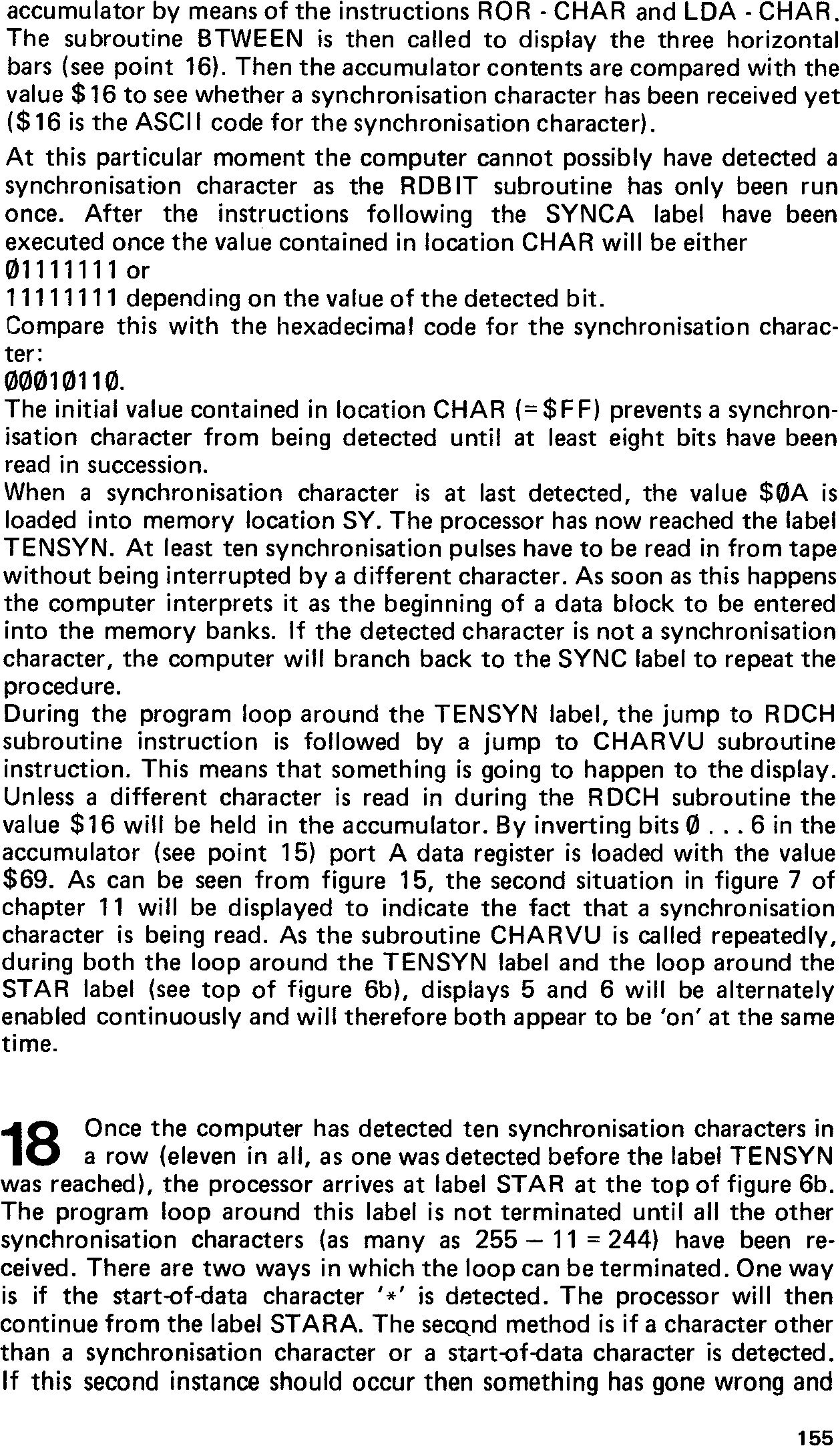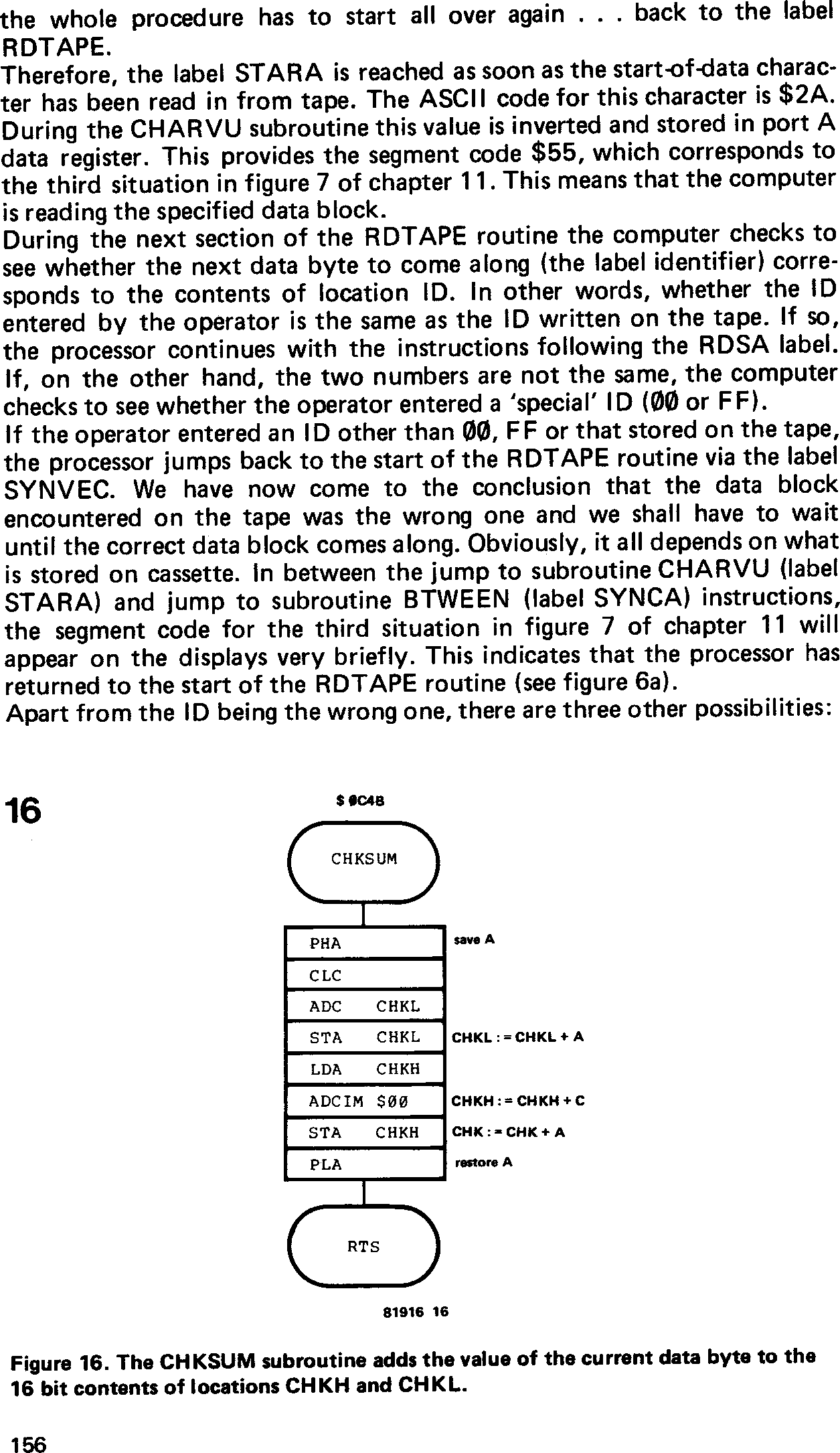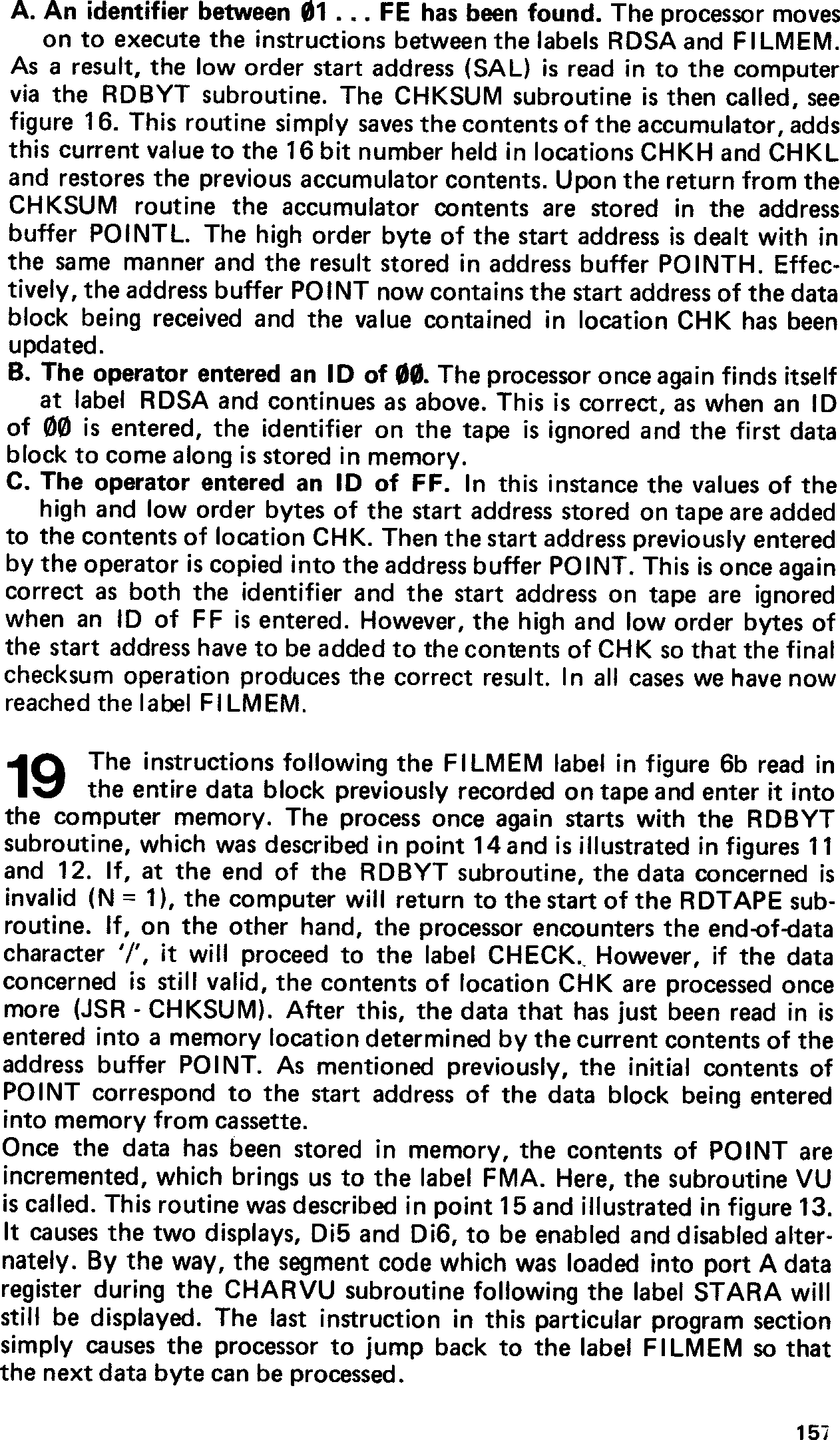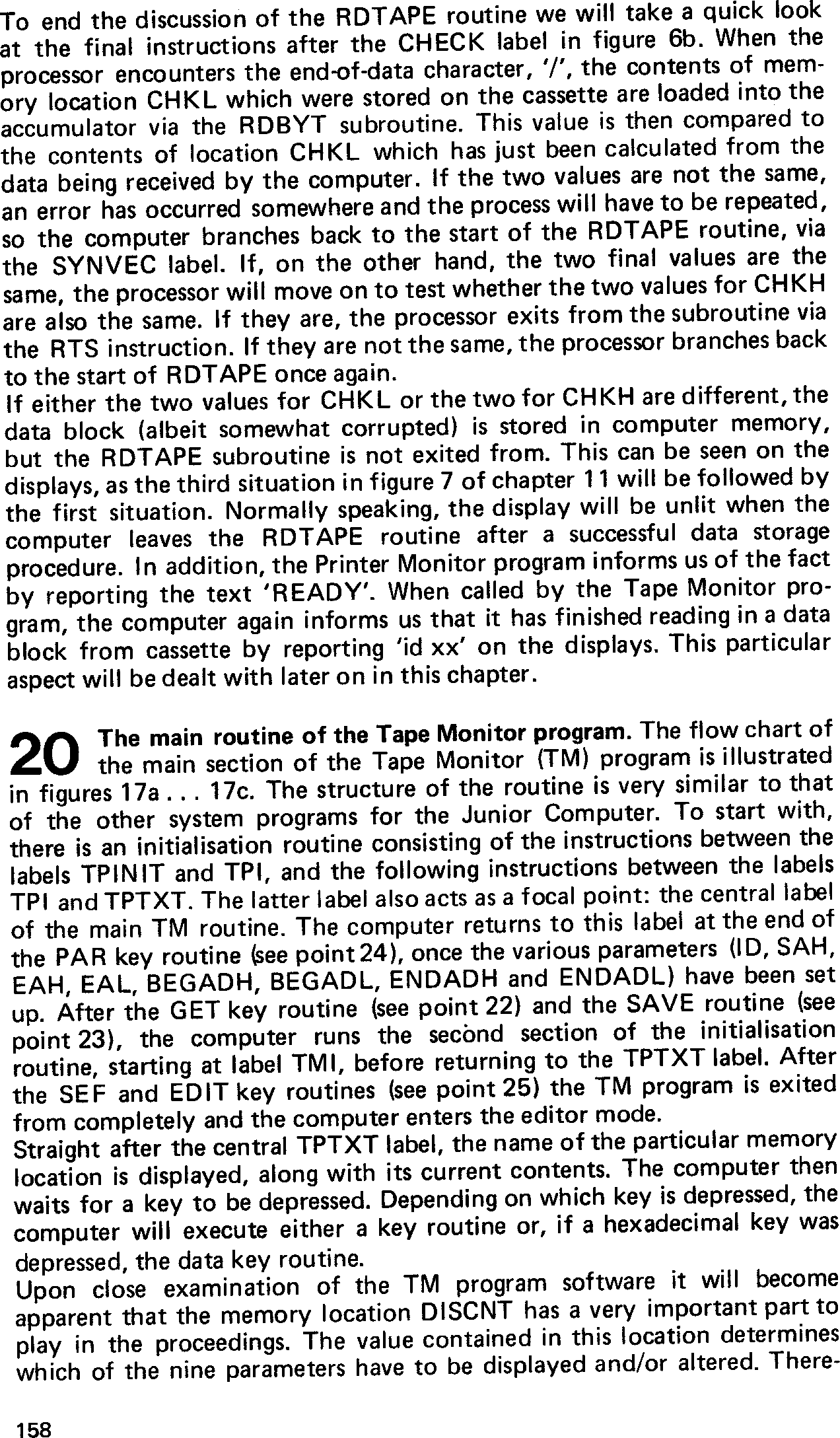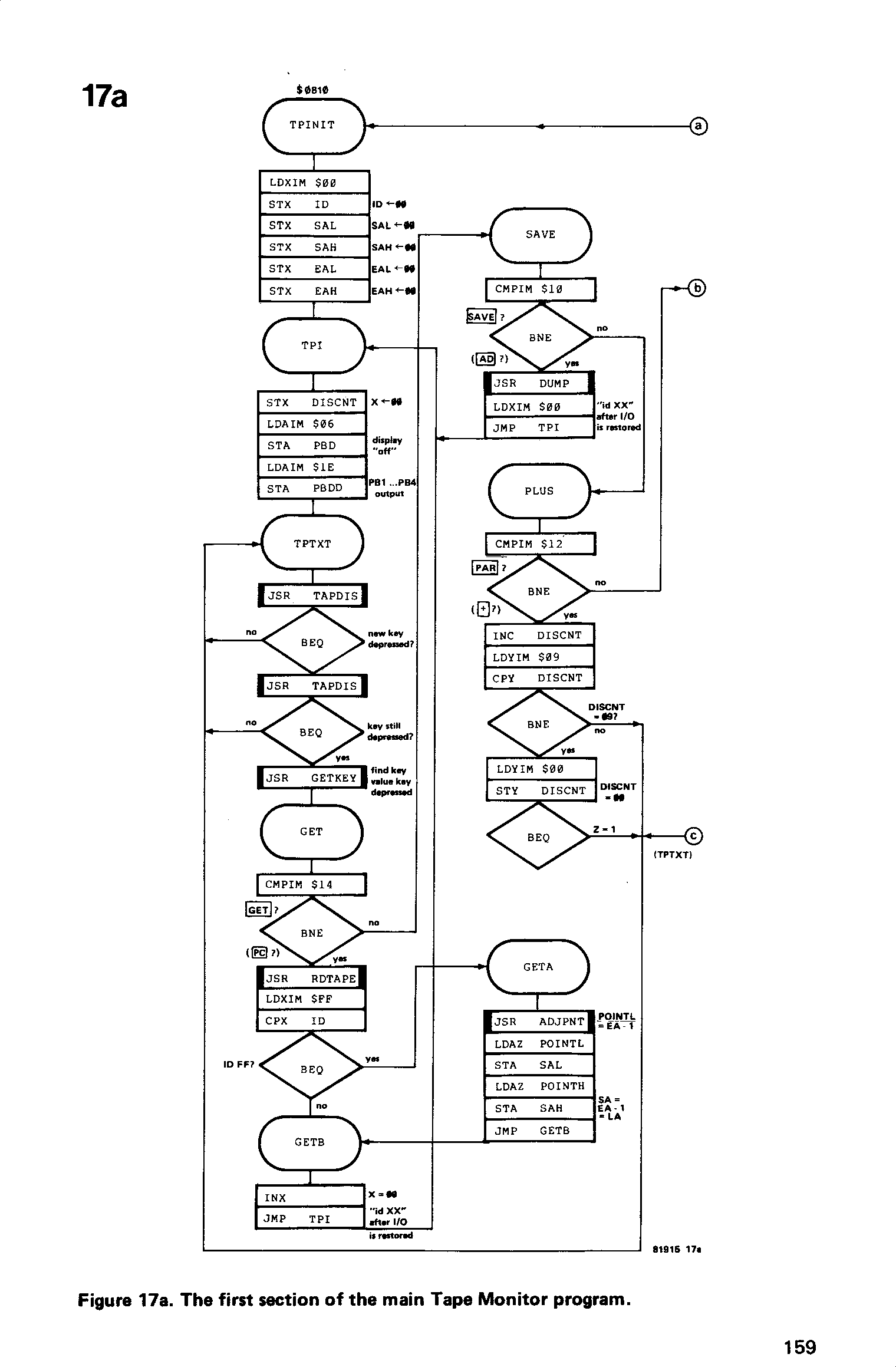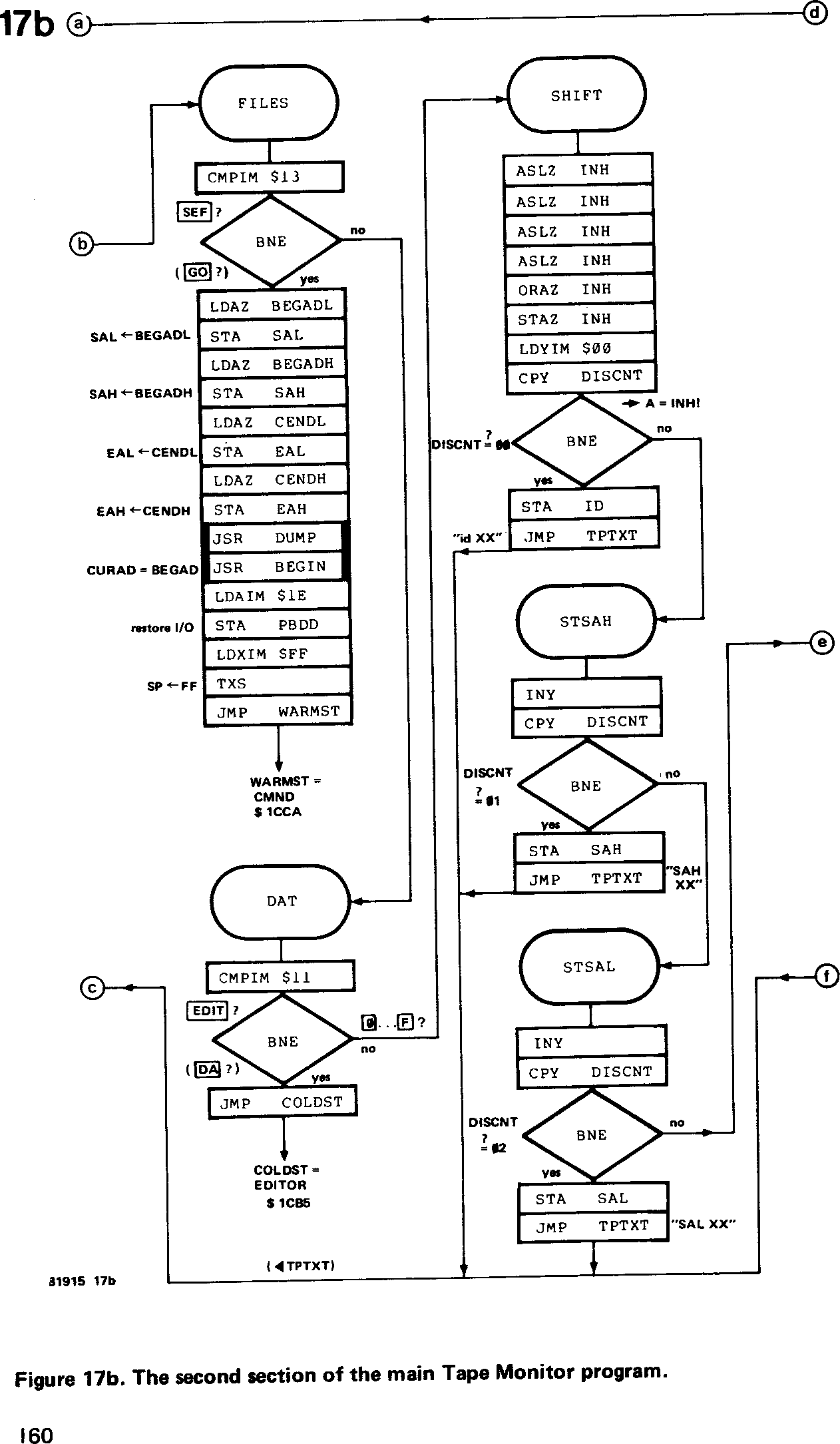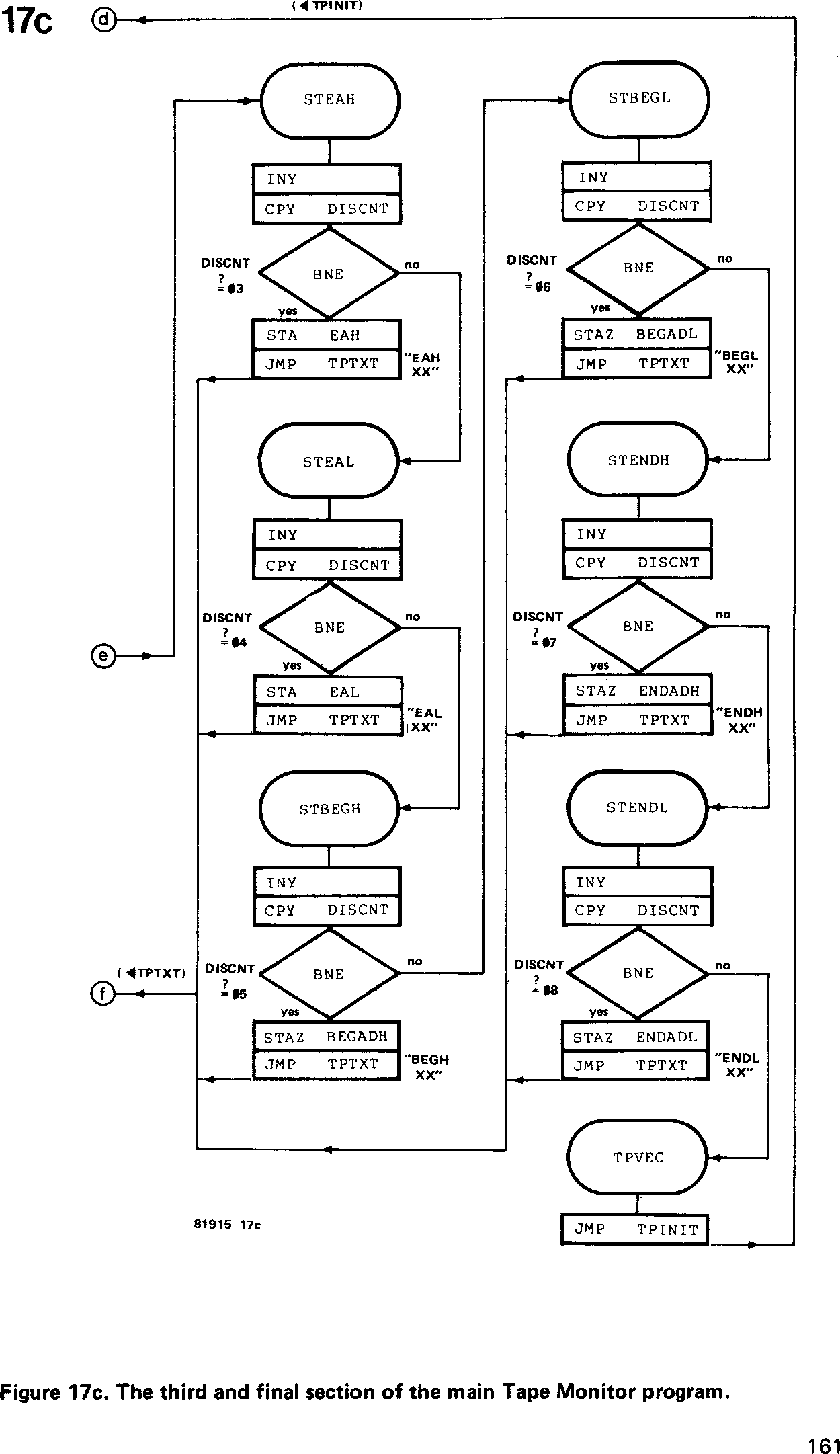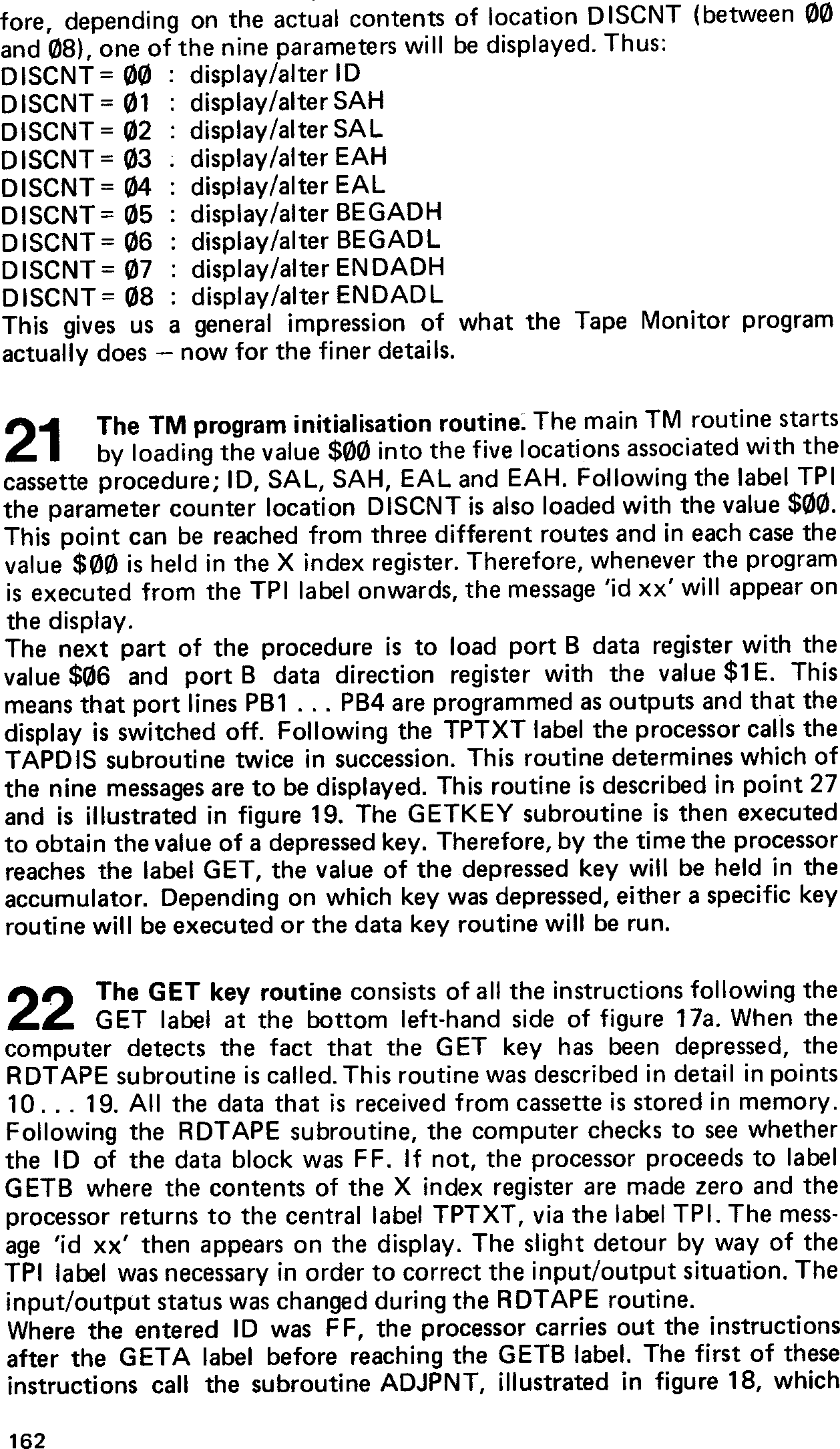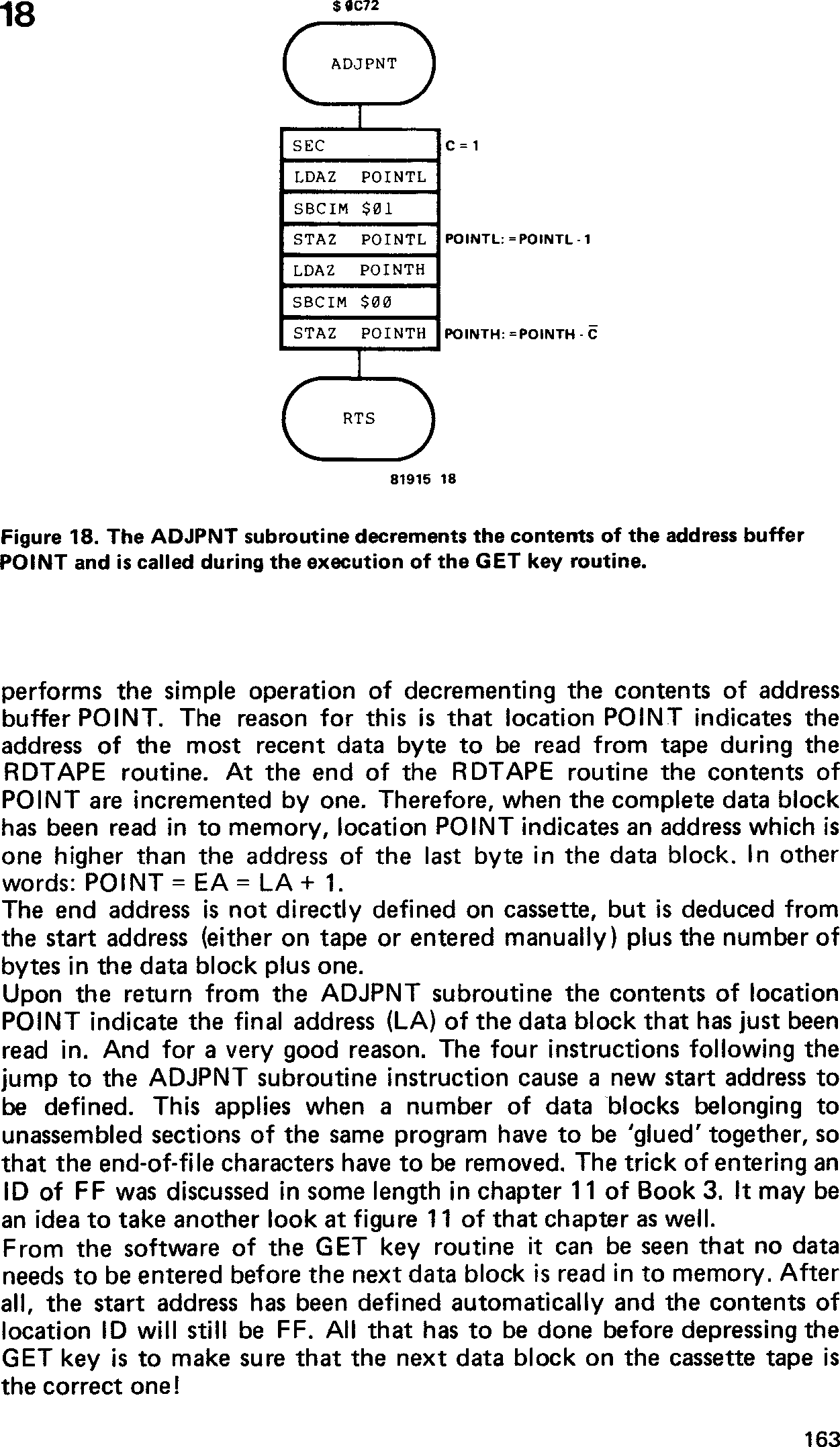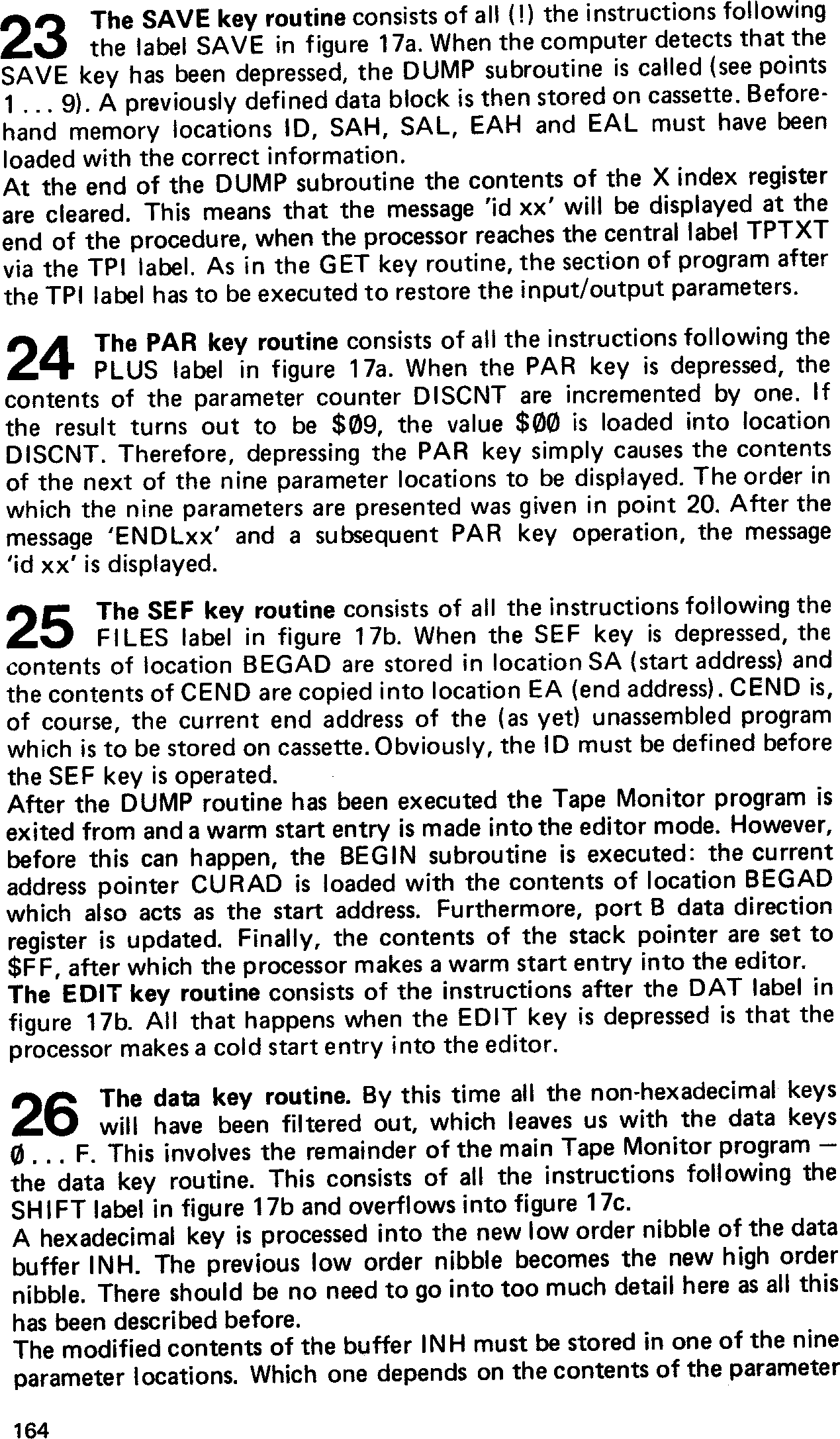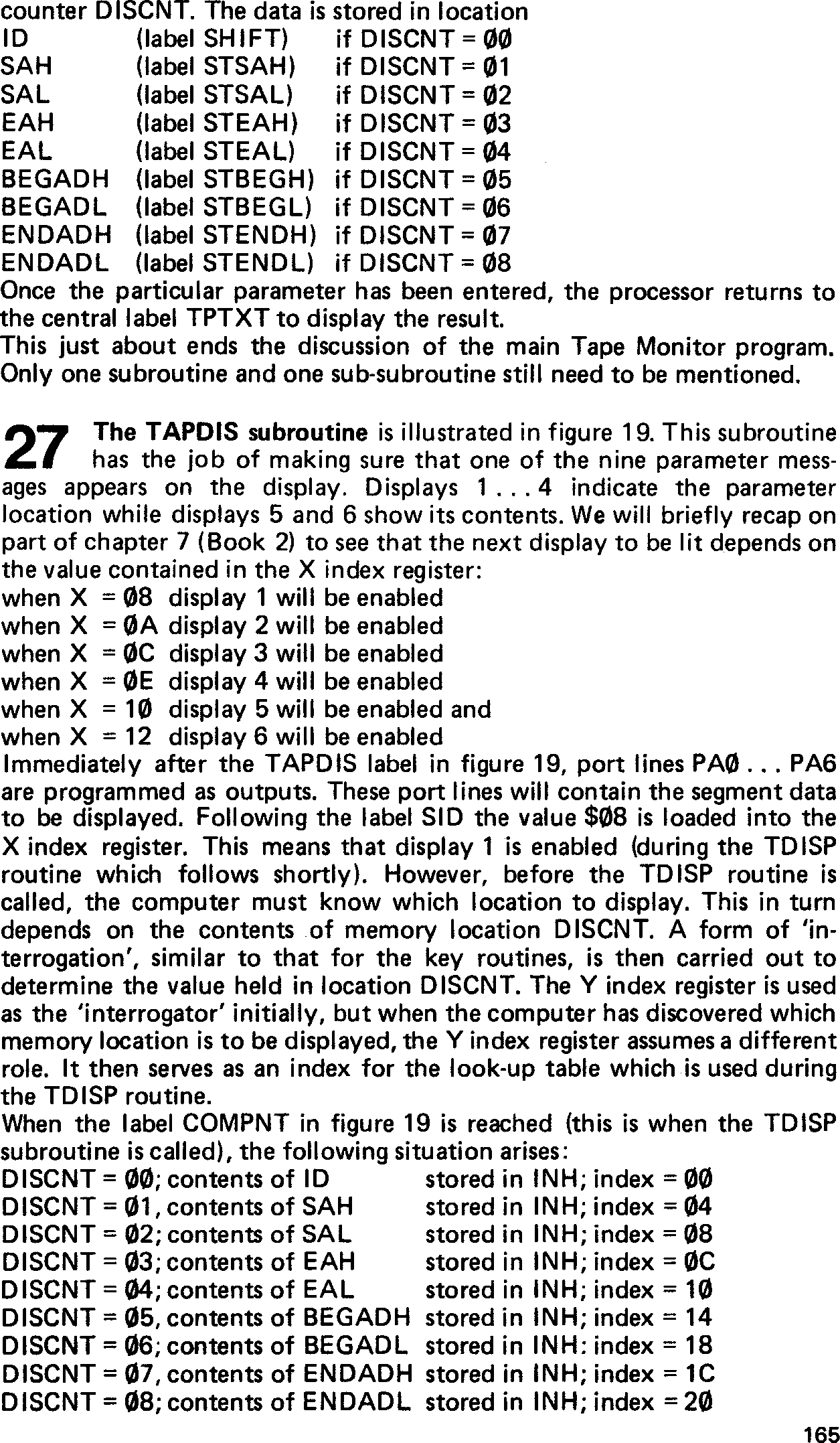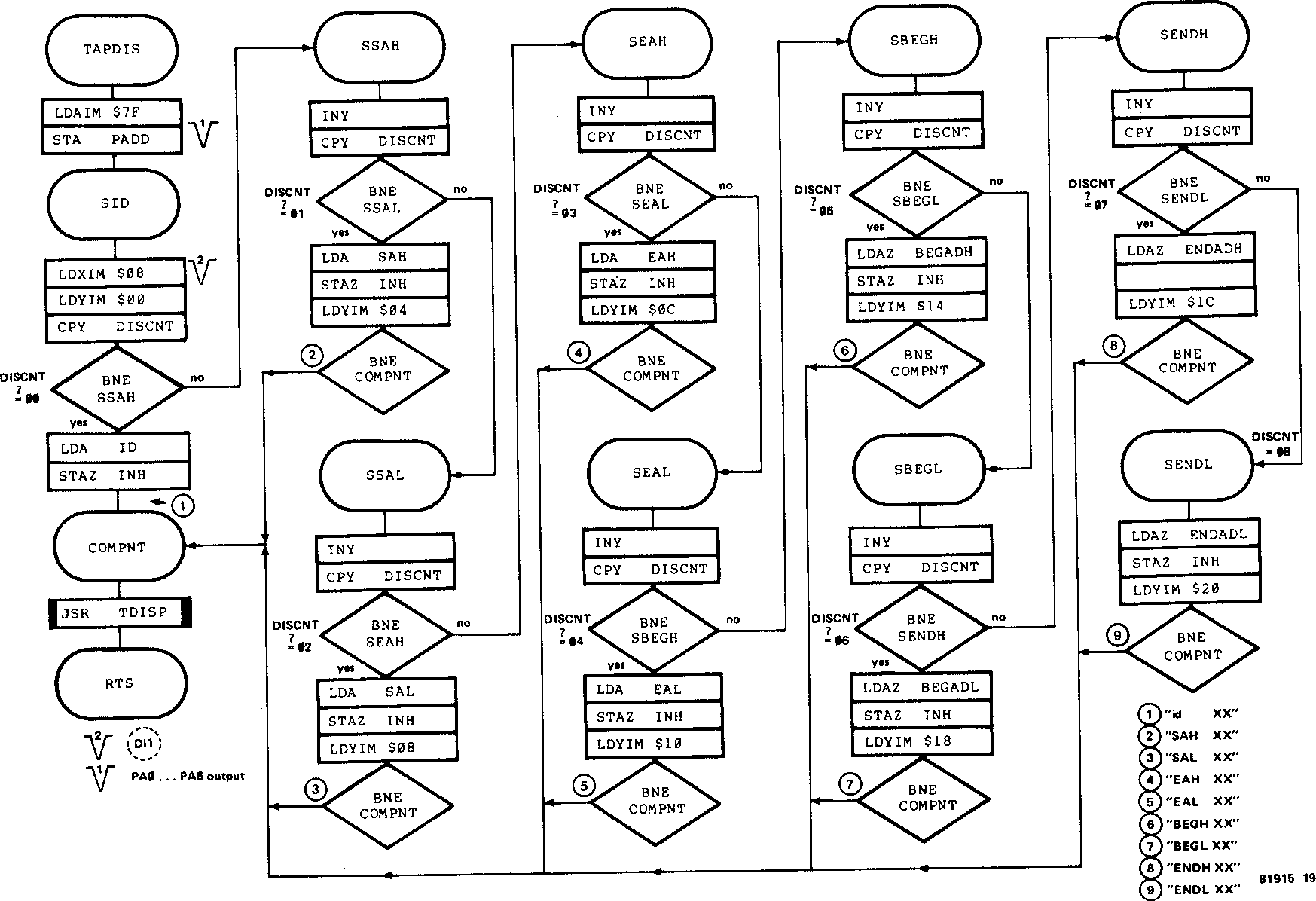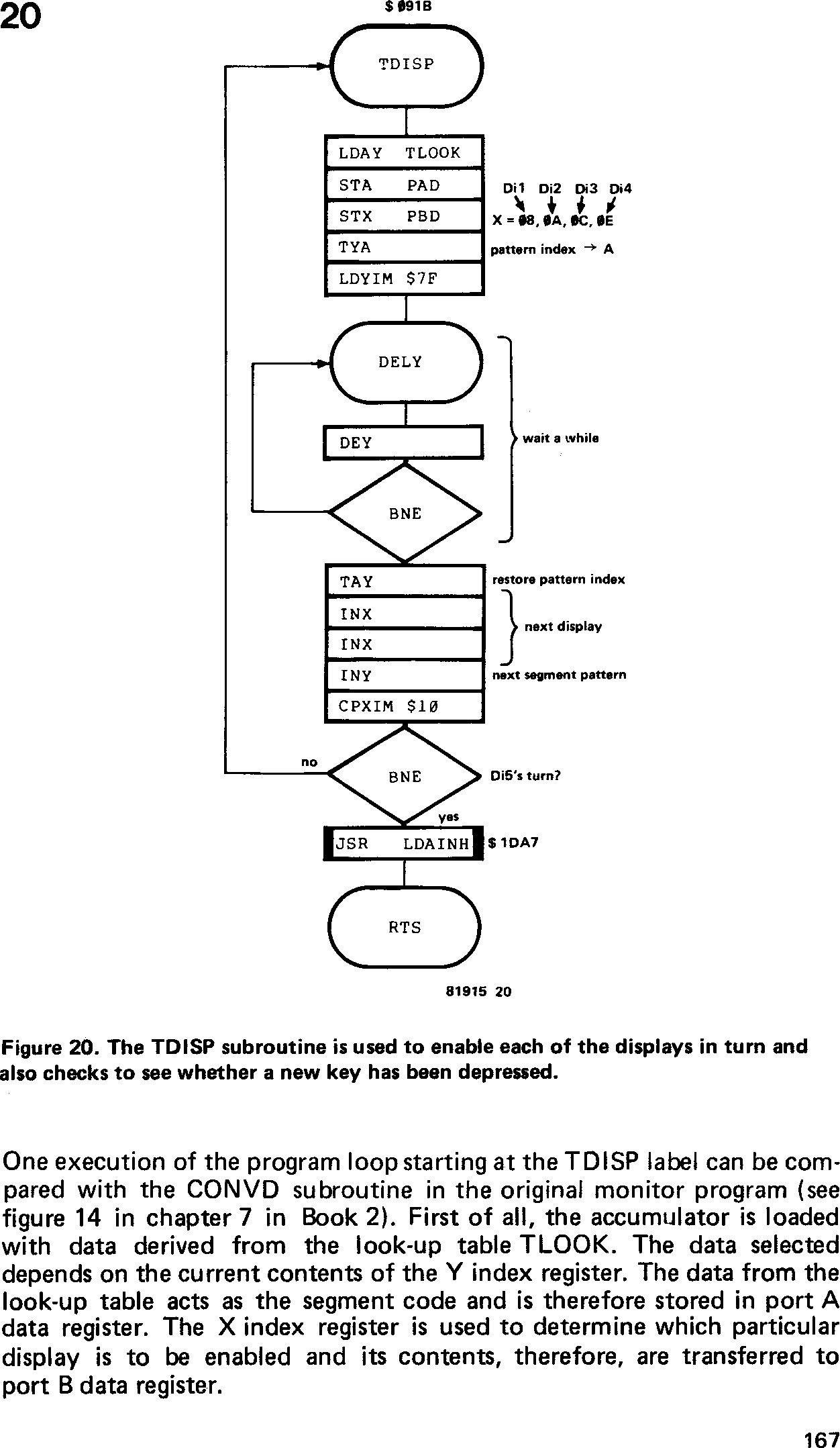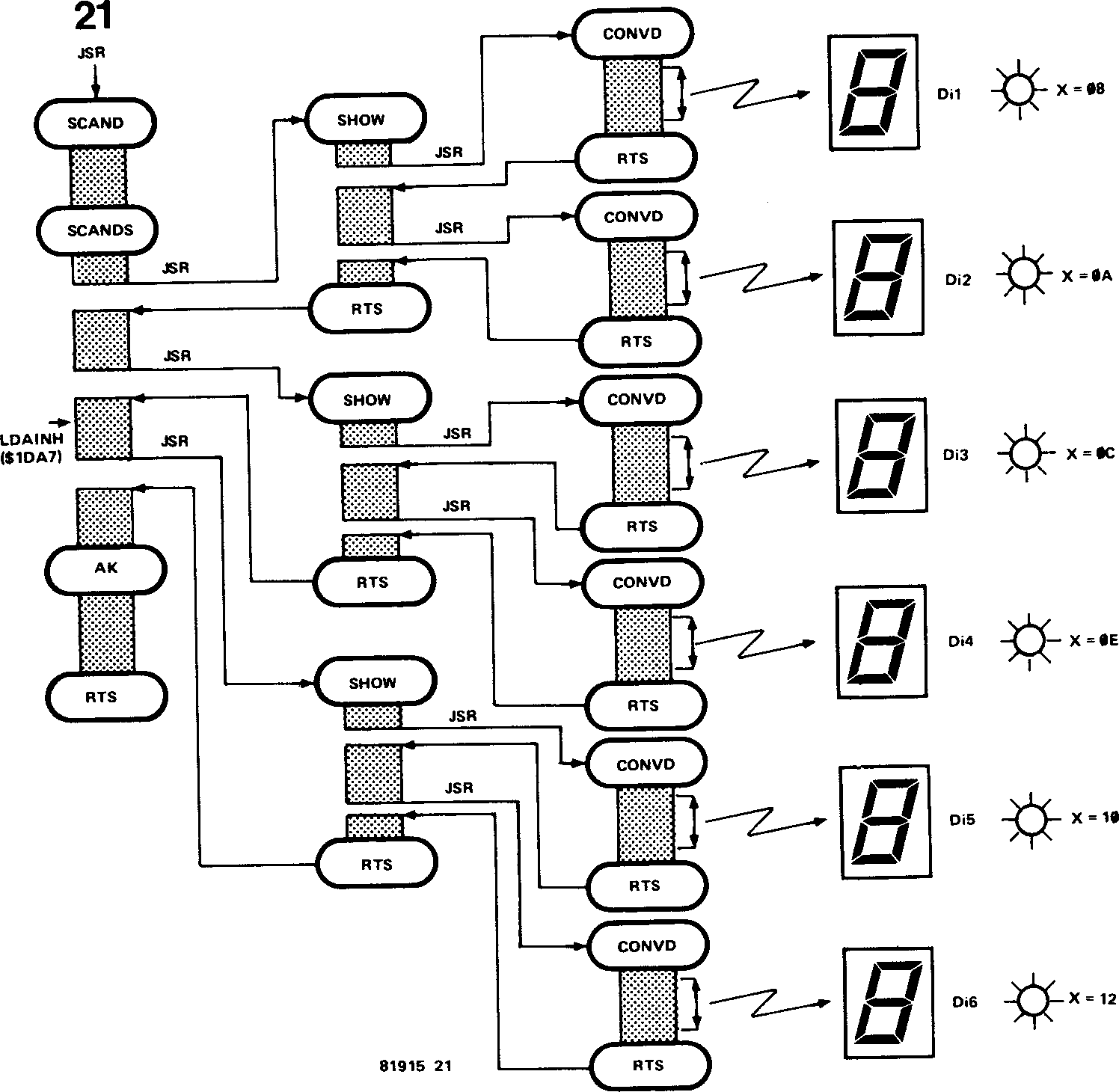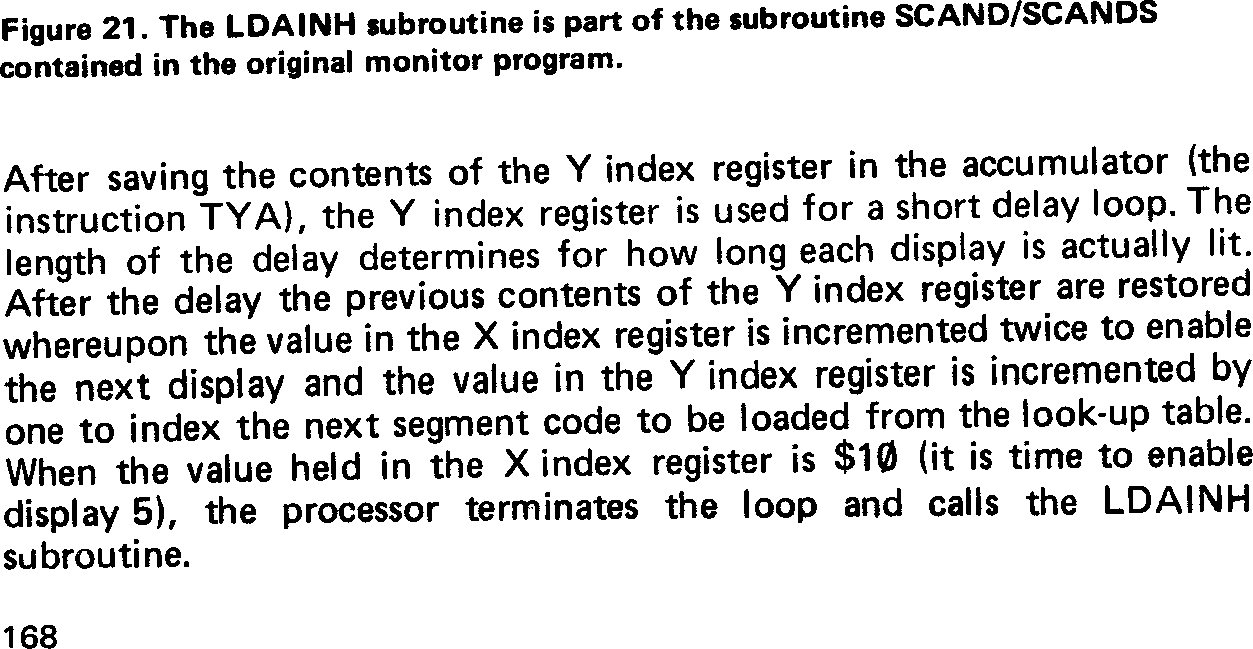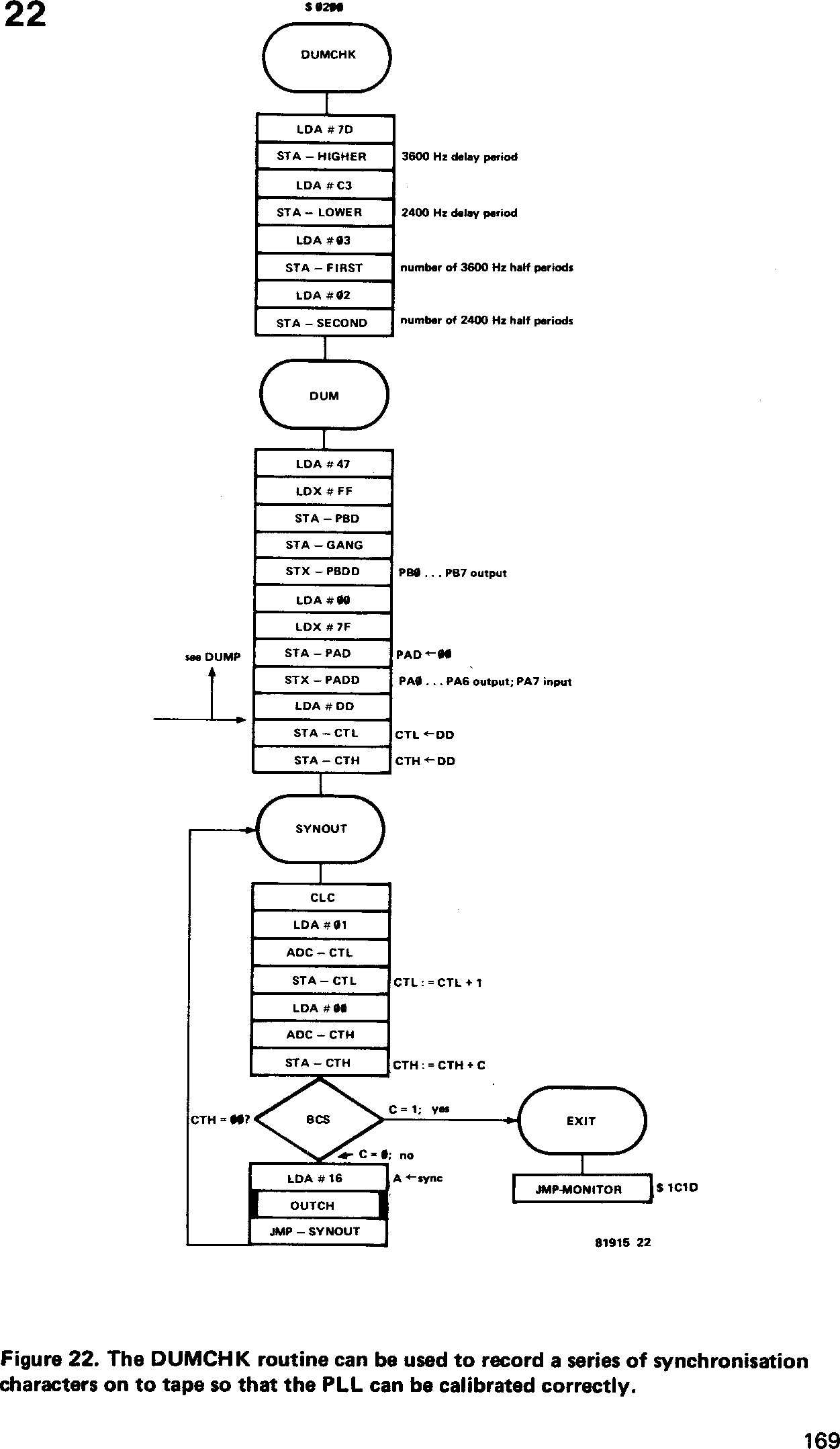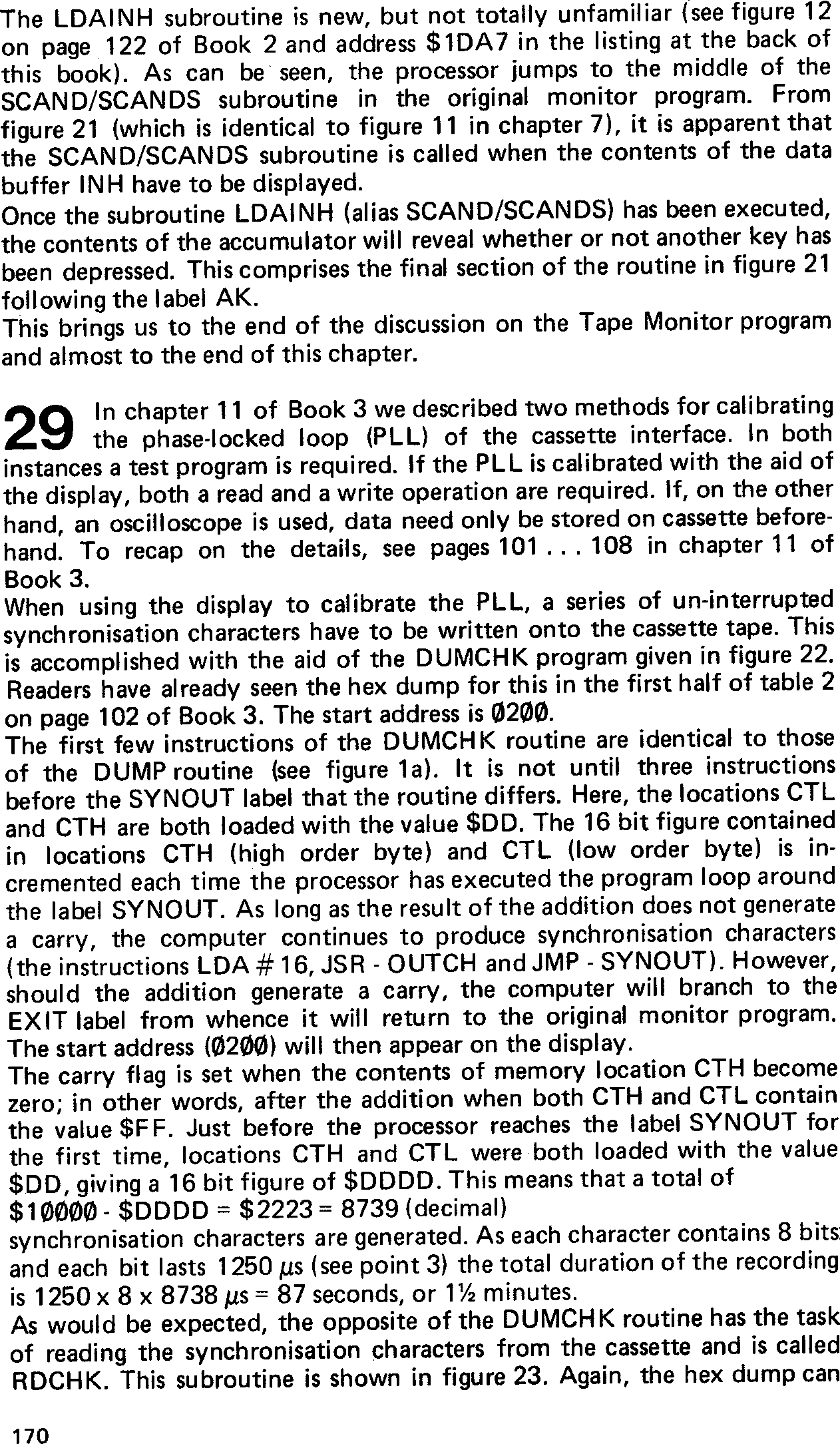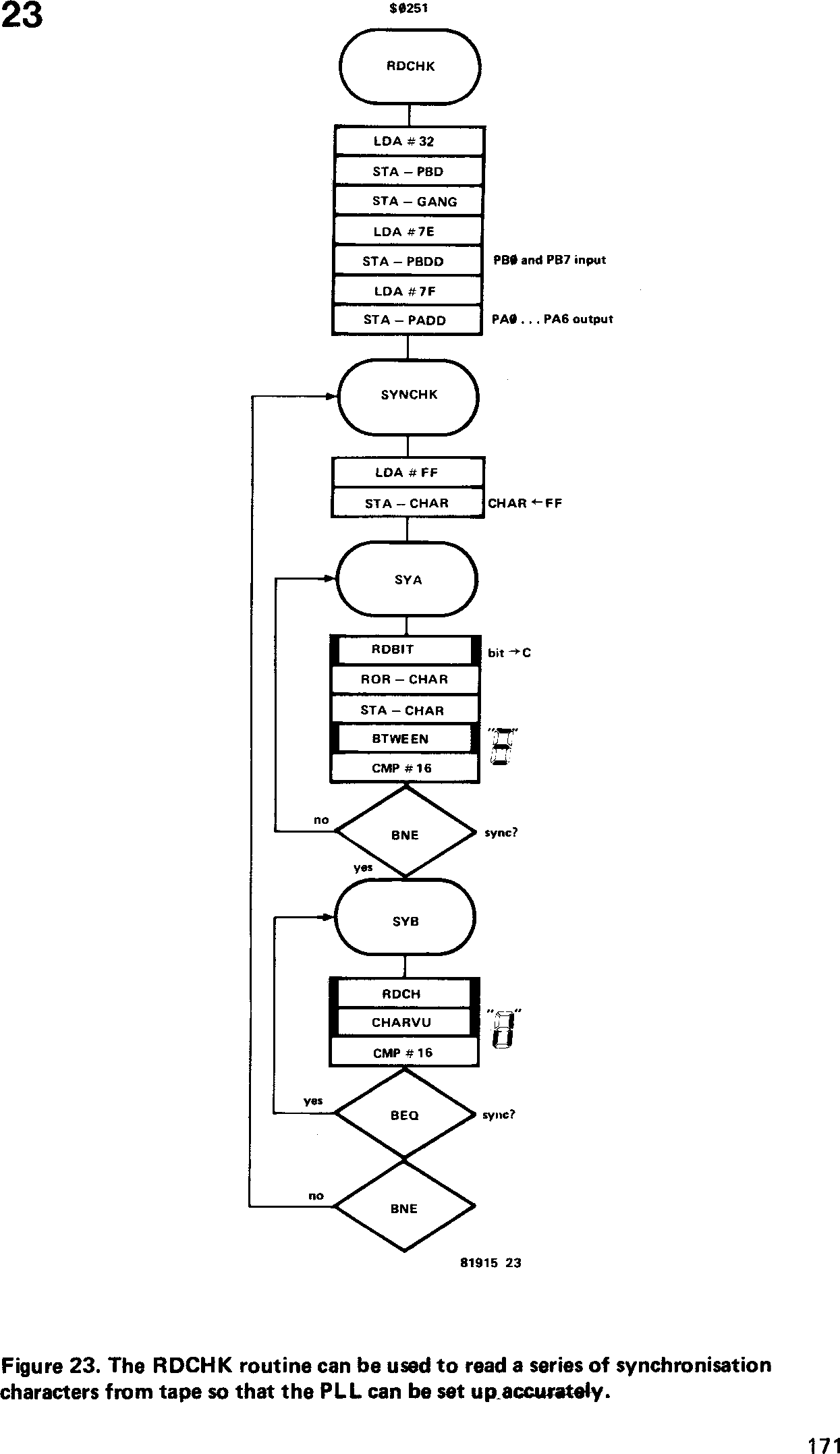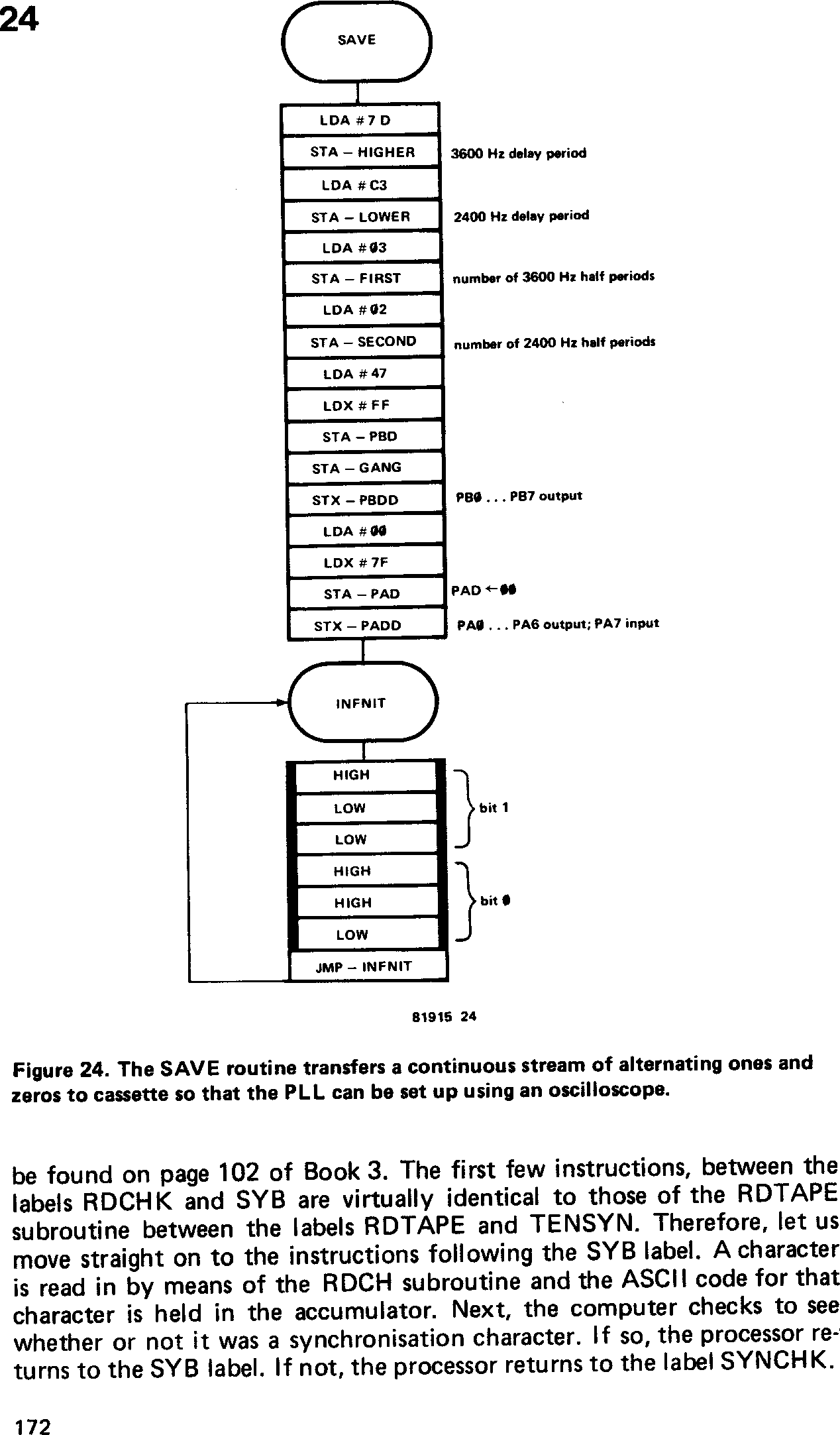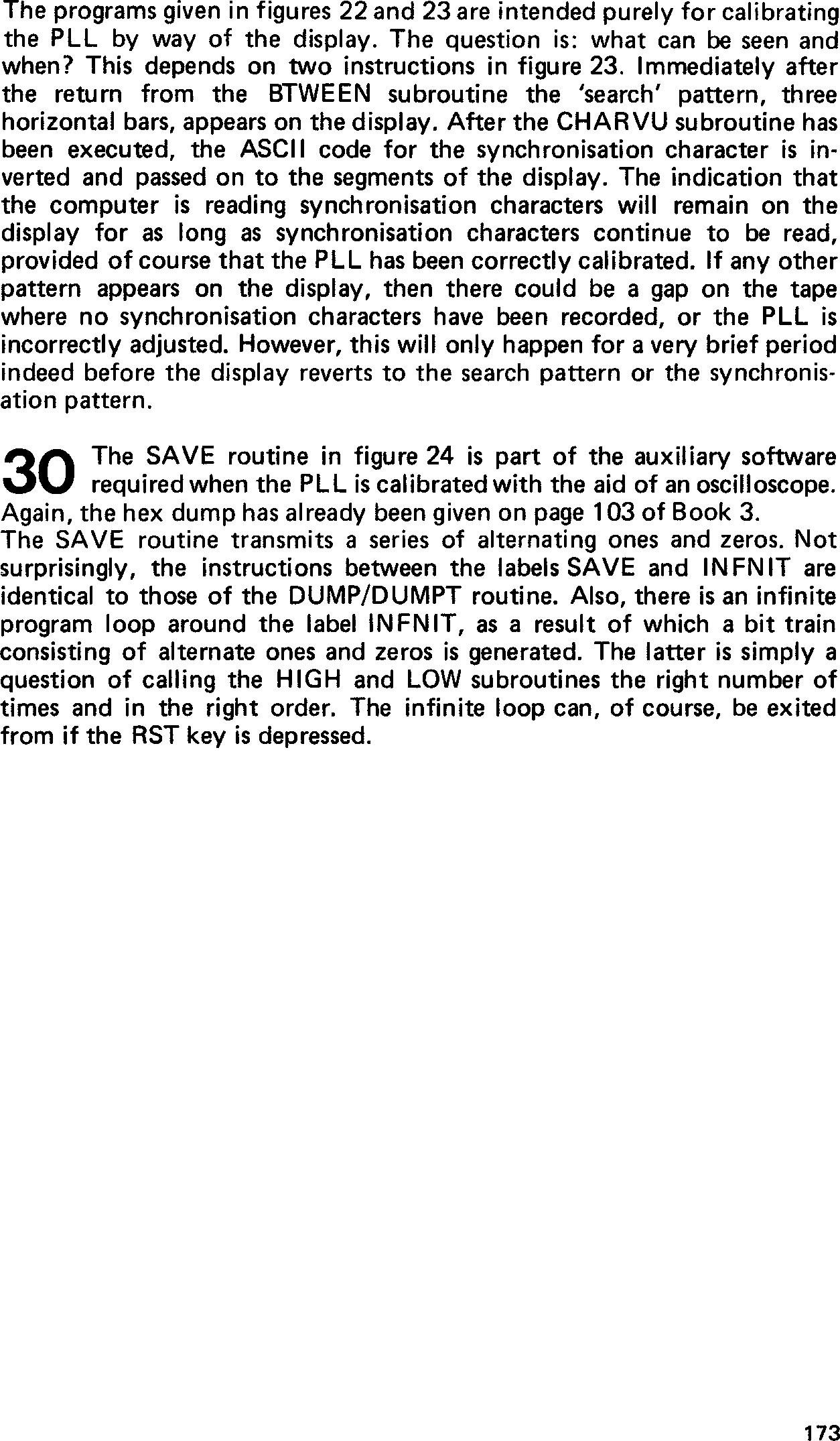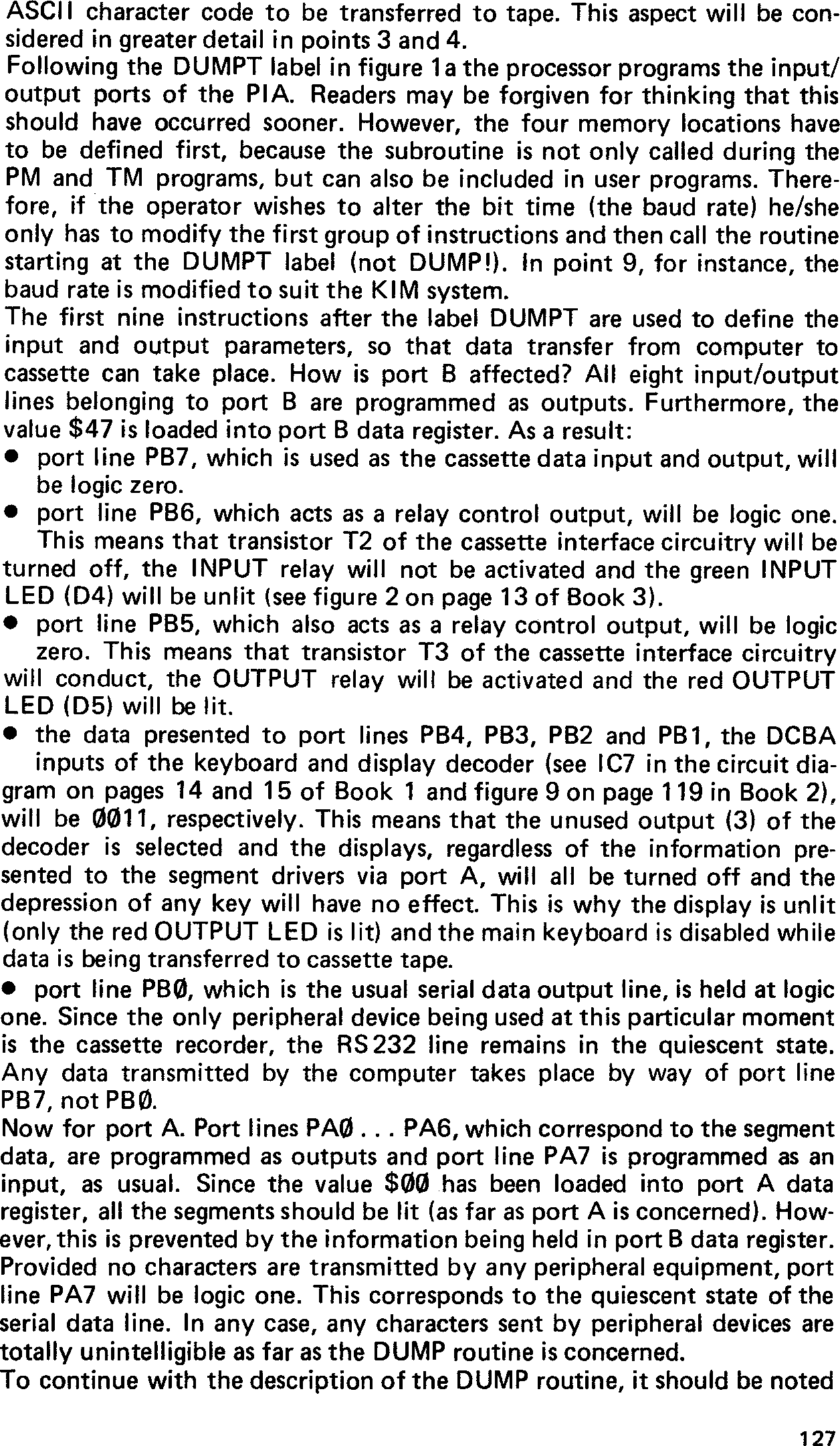
What is required in the way of software to enable the Junior Computer to store data on and retrieve data from ordinary magnetic tape? How is the Tape Monitor routine structured? These are just two of the many questions which will be answered during the course of this chapter. The two main sections of the cassette software are the DUMP routine which transfers information from the microcomputer to the cassette tape and the RDTAPE routine which does exactly the opposite. These subroutines can be called by either the Printer Monitor or the Tape Monitor routines and can also be included in user programs.
Firstly, this chapter will examine the DUMP routine and its associated subroutines (or rather, sub-subroutines!) in points 1 to 9. This will be followed by a detailed description of the RDTAPE routine and its subsubroutines in points 10 to 19. This will bring us to the discussion of the main section of the Tape Monitor program and its subroutines in points 20 to 28. The chapter concludes with a brief discourse of the PLL test software in points 29 and 30. However, before you can retrieve data from cassette tape you must be able to store it ...
The DUMP routine. The complete flowchart for the DUMP routine 1 is shown in figures 1a (first half) and 1b (second half). By far the best idea seems to start at the very top of figure 1 a! In other words, with the section of program between the labels DUMP and DUMPT. As can be seen, a total of four memory locations, HIGHER, LOWER, FIRST and SECOND, are first loaded with specific data. These locations play an important part in determining the bit time and the relative durations of the 2400 Hz and 3600 Hz tones — the time taken for a data byte or an

